Forums
- Forums
- Axis And Allies Forum
- General Discussion
- Aviation News
Aviation News
Post a reply
- Go to Next topic
- Go to Welcome
- Go to Introduce Yourself
- Go to General Discussion
- Go to Screenshots, Images and Videos
- Go to Off topic
- Go to Works in Progress
- Go to Skinning Tips / Tutorials
- Go to Skin Requests
- Go to IJAAF Library
- Go to Luftwaffe Library
- Go to RAF Library
- Go to USAAF / USN Library
- Go to Misc Library
- Go to The Ops Room
- Go to Made in Germany
- Go to Campaigns and Missions
- Go to Works in Progress
- Go to Juri's Air-Raid Shelter
- Go to Campaigns and Missions
- Go to Works in Progress
- Go to Skinpacks
- Go to External Projects Discussion
- Go to Books & Resources
-
9 years agoSun May 01 2016, 02:50pm
 Main AdminAn F-22 Raptor amazes airshow patrons at Marine Corps Air Station Cherry Point, N.C., April 29, during the 2016 MCAS Cherry Point Air Show "Celebrating 75 Years." The Air Force's F-22 Raptor combines sensor capabilities with integrated avionics, situational awareness and weapons to provide the first-kill opportunity against threats by performing air-to-air and air-to-ground missions. This year's air show celebrated MCAS Cherry Point and 2nd Marine Aircraft Wing's 75th anniversary and featured 40 static displays, 17 aerial performers, as well as a concert. (U.S. Marine Corps photo by Cpl. Jodson B. Graves/Released)
Main AdminAn F-22 Raptor amazes airshow patrons at Marine Corps Air Station Cherry Point, N.C., April 29, during the 2016 MCAS Cherry Point Air Show "Celebrating 75 Years." The Air Force's F-22 Raptor combines sensor capabilities with integrated avionics, situational awareness and weapons to provide the first-kill opportunity against threats by performing air-to-air and air-to-ground missions. This year's air show celebrated MCAS Cherry Point and 2nd Marine Aircraft Wing's 75th anniversary and featured 40 static displays, 17 aerial performers, as well as a concert. (U.S. Marine Corps photo by Cpl. Jodson B. Graves/Released)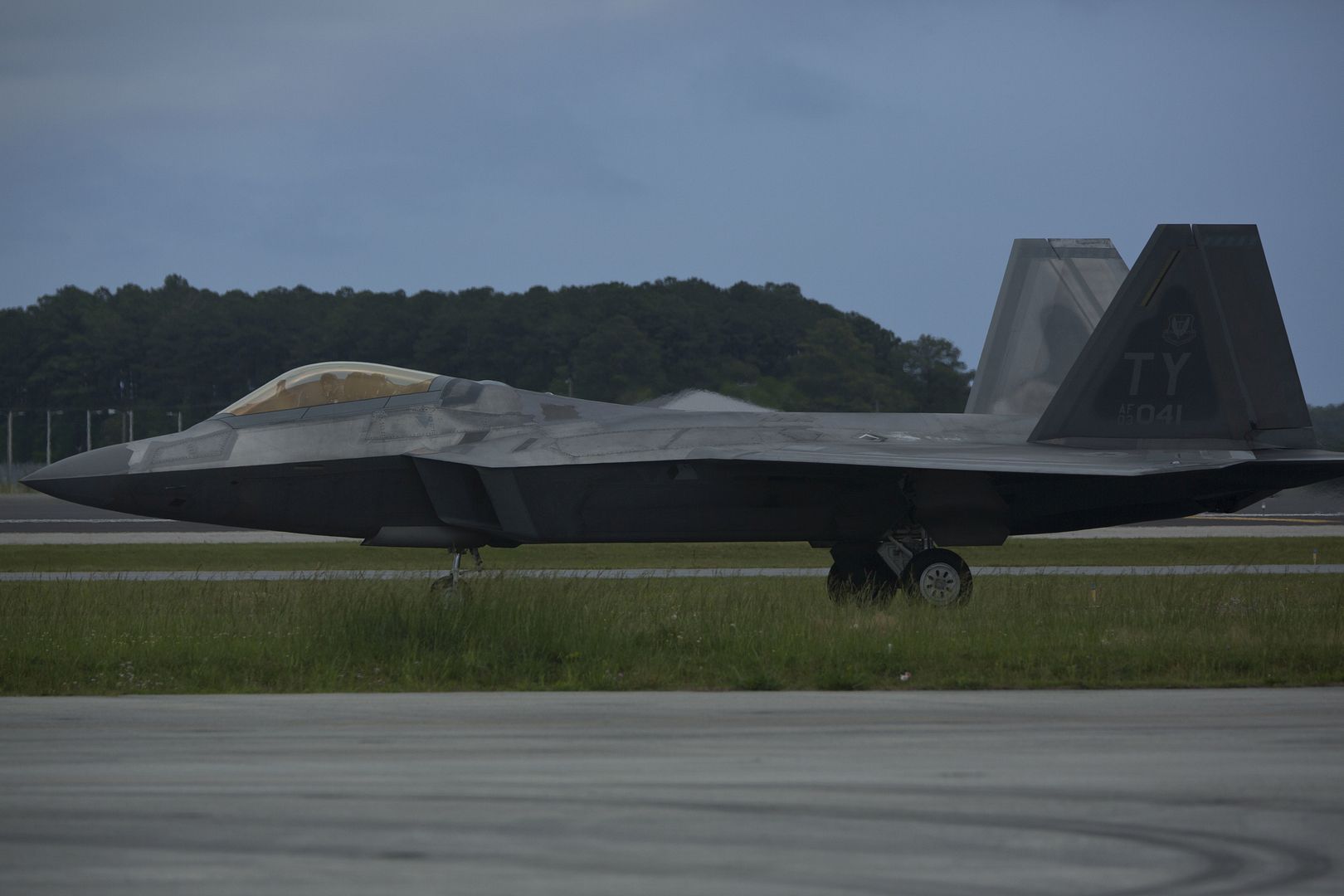
The U.S. Navy Blue Angels have arrived at Marine Corps Air Station Cherry Point, N.C., April 29, during the 2016 MCAS Cherry Point Air Show "Celebrating 75 Years." The mission of the Blue Angels is to showcase the pride and professionalism of the Navy and the Marine Corps by inspiring a culture of excellence and service to country through flight demonstrations and community outreach. This year's air show celebrated Cherry Point and 2nd Marine Aircraft Wing's 75th anniversary and featured 40 static displays, 17 aerial performers, as well as a concert. (U.S. Marine Corps photo by Cpl. Jodson B. Graves/Released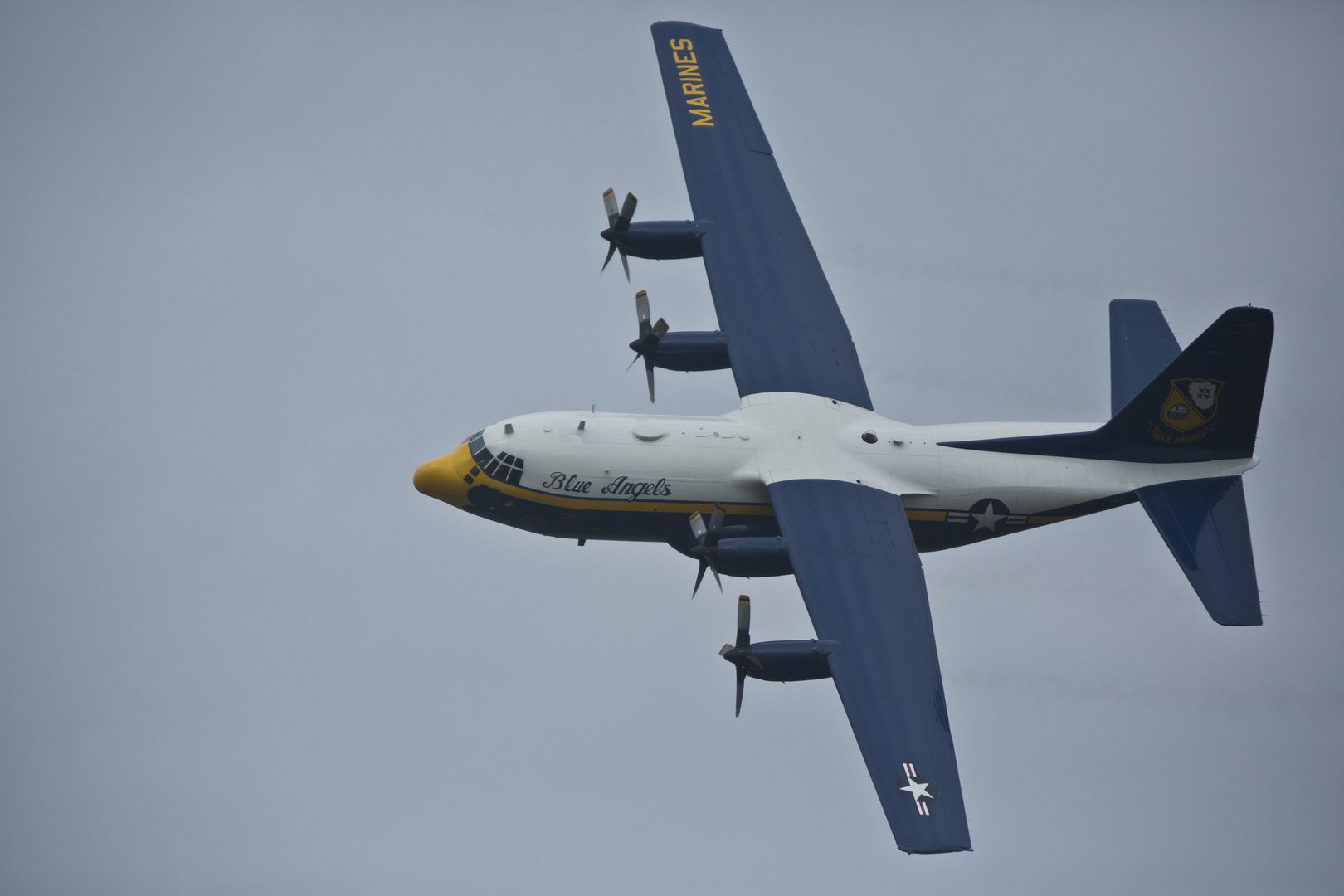
3 EA-6B Prowlers of Marine Tactical Electronic Warfare Training Squadron 1 perform one final pass over the crowds of spectators during a deactivation ceremony at Marine Corps Air Station Cherry Point on April 29, 2016. The squadron was deactivated during the 2016 air show. This year?s air show celebrated MCAS Cherry Point and 2nd Marine Aircraft Wing?s 75th anniversaries and featured 40 static displays, 17 aerial performers and a concert.(U.S. Marine Corps photo by Mauricio Campino/Released)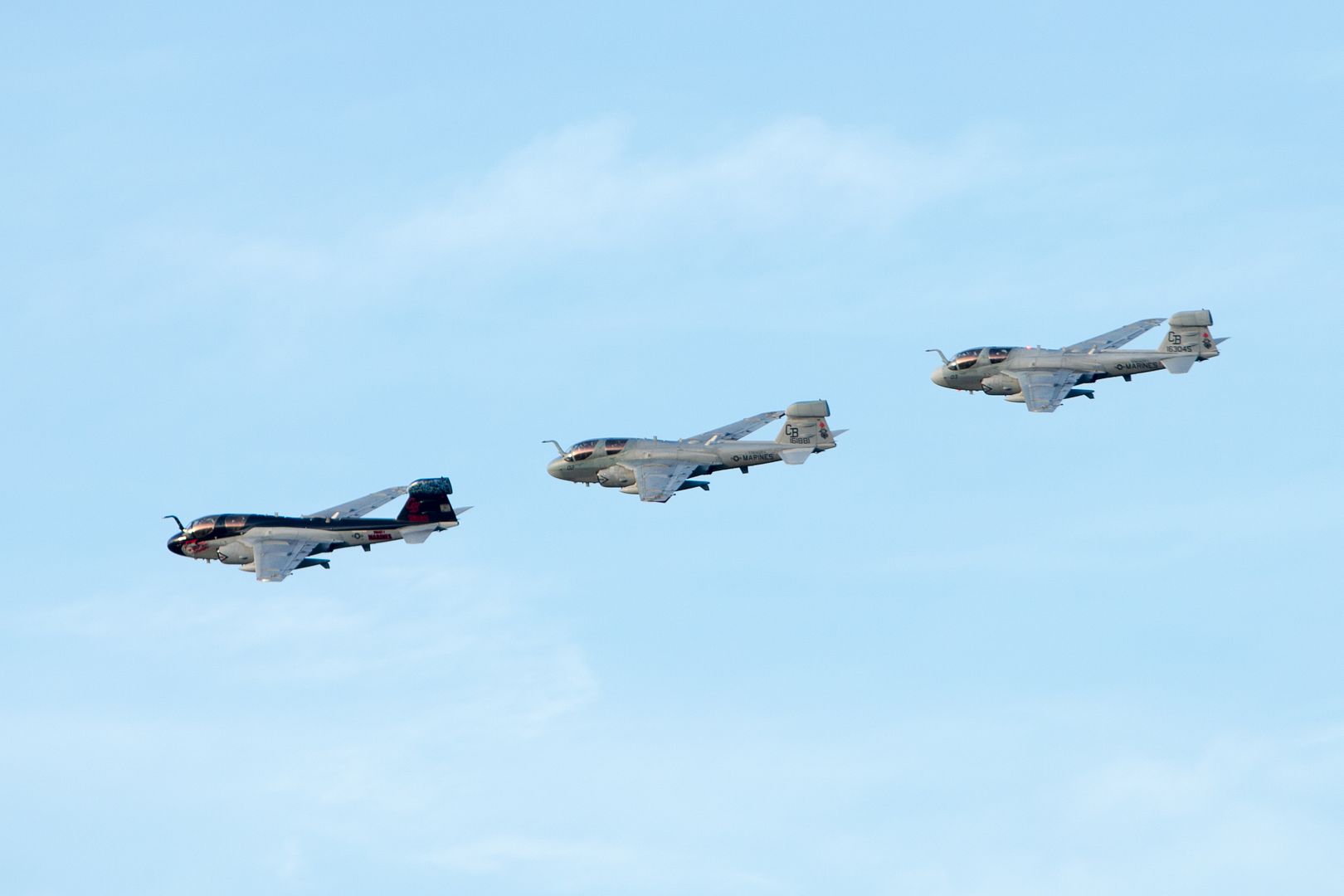
A U.S. Navy Blue Angels on the flightline at Marine Corps Air Station Cherry Point, N.C., April 29, during the 2016 MCAS Cherry Point Air Show ?Celebrating 75 Years.?
The mission of the Blue Angels is to showcase the pride and professionalism of the Navy and the Marine Corps by inspiring a culture of excellence and service to country through flight demonstrations and community outreach. This year?s air show celebrated Cherry Point and 2nd Marine Aircraft Wing?s 75th anniversary and featured 40 static displays, 17 aerial performers, as well as a concert. (U.S. Marine Corps photo by Mauricio Campino/Released)
The fireworks display is an eye catching feature at the 2016 MCAS Cherry Point Air Show ?Celebrating 75 Years,? on Marine Corps Air Station Cherry Point, N.C., April 29, 2016. The fireworks included a unique light display and patriotic music during the night show, following the flying performances. This year?s air show celebrated MCAS Cherry Point and 2nd Marine Aircraft Wing?s 75th anniversary and featured 40 static displays, 17 aerial performers, as well as a concert. (U.S. Marine Corps photo by Mauricio Campino/Released)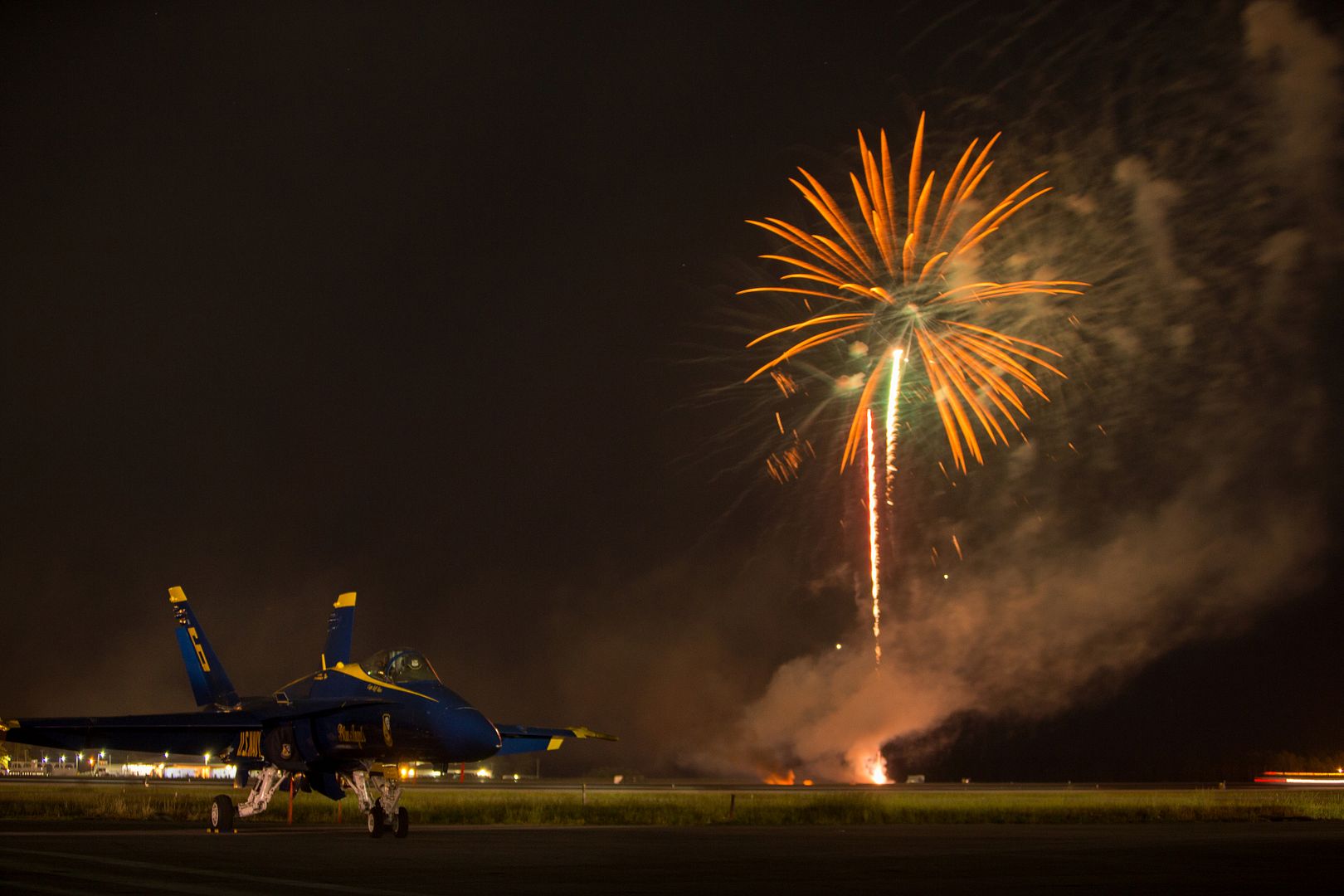
An F-35B Lightning II stands as a static display on the flight line prior to the 2016 Marine Corps Air Station Cherry Point Air Show ? ?Celebrating 75 Years? at MCAS Cherry Point, N.C., April 29, 2016 The F-35B Lightning II is a 5th Generation fighter that has the ability to perform air-to-ground precision strikes in all weather. It?s suitable for air-to-air combat engagements and combines stealth with extreme speed and agility. This year?s air show celebrated MCAS Cherry Point and 2nd Marine Aircraft Wing?s 75th anniversary. Cherry Point is the perfect place for an air show due to its massive runway system, broad flight line and huge open spaces over which the performers can safely conduct their impressive maneuvers.
(U.S. Marine Corps photo by Cpl. N.W. Huertas/ Released)
NASA?s Armstrong Flight Research Center DC-8 aircraft taxis on the taxiway at Osan Air Base, Republic of Korea, April 27, 2016. The research aircraft is at Osan as part of a six-week cooperative Korean and U.S. air-quality study to advance the ability to monitor air pollution from space. (U.S. Air Force photo by Tech. Sgt. Travis Edwards/Released)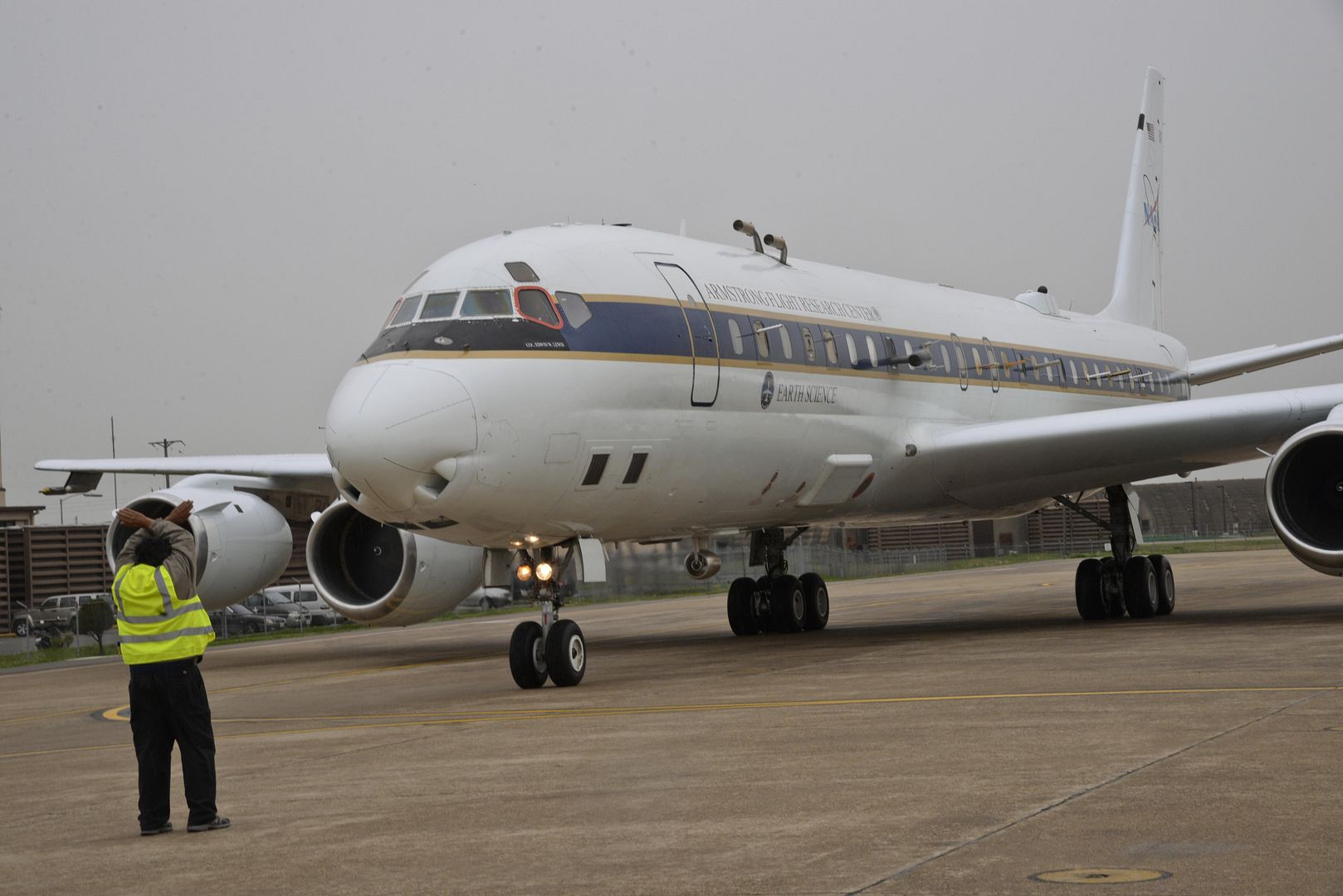
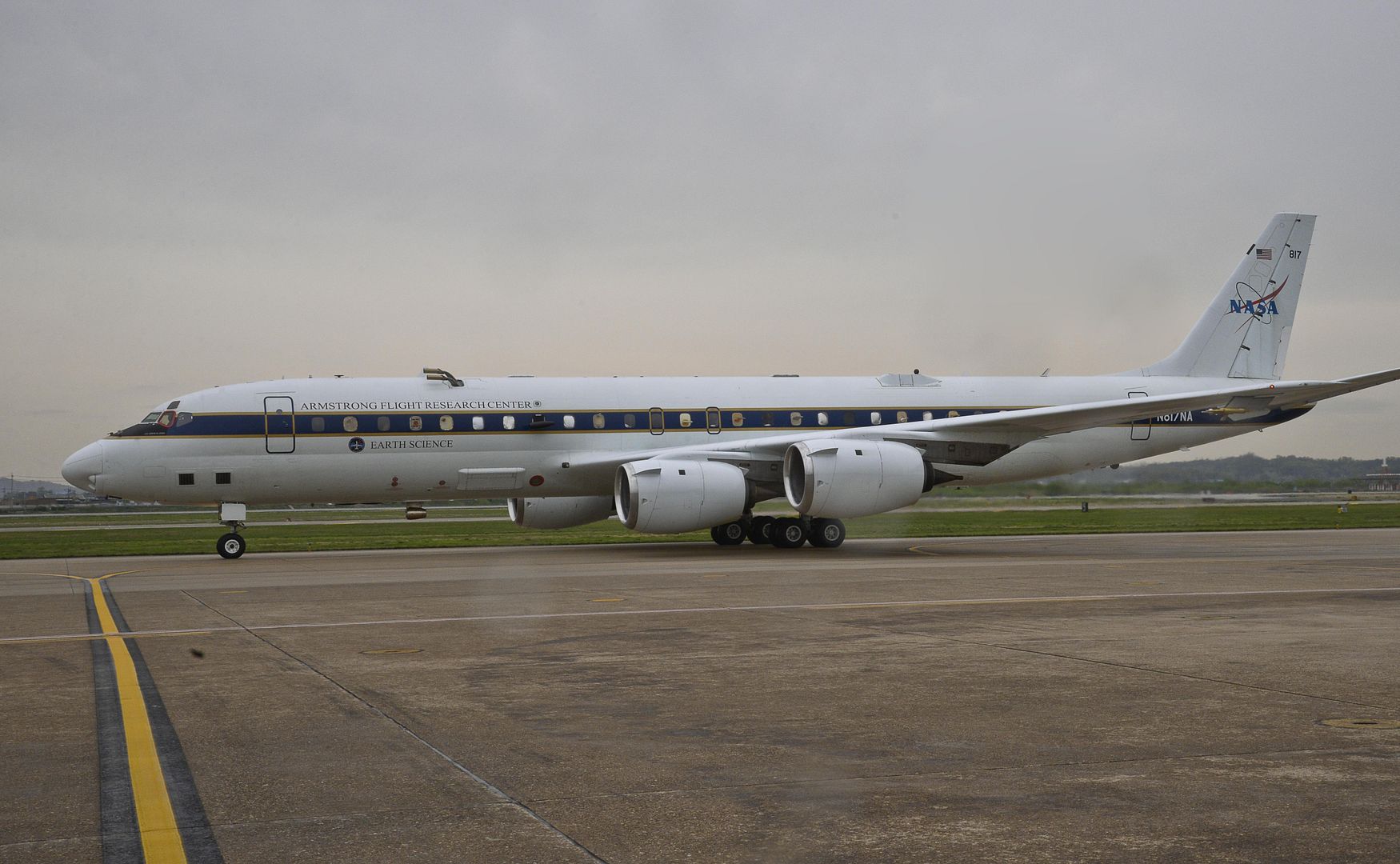
The video above shows the US 5th generation fighter enter the British Mach Loop LFA for the very first time on Apr. 26. In this video one may also note the aircraft maneuvering at low altitude (followed by an US F-15E Strike Eagle from RAF Lakenheath). -
 Main AdminMOSCOW --- The first prototype (OP-1) of the medium multirole Ka-62 helicopter took off at Russian Helicopters' Progress Arsenyev Aviation Company (part of State Corporation Rostec) on April 28. The lift in a hover mode was part of the factory flight testing and was completed successfully.
Main AdminMOSCOW --- The first prototype (OP-1) of the medium multirole Ka-62 helicopter took off at Russian Helicopters' Progress Arsenyev Aviation Company (part of State Corporation Rostec) on April 28. The lift in a hover mode was part of the factory flight testing and was completed successfully.
The OP-1 Ka-62 was launched to evaluate its overall performance and to test its main power supply systems and avionics. The helicopter was operated by test pilots from the Kamov Design Bureau, which is the main developer of the Ka-62. Previously, the rotorcraft has successfully passed a series of tests in a ground-based racing mode.
"This is a very significant event for the Russian Helicopters holding company and a due result of our work", - said the holding company's CEO Alexander Mikheev. - "The new Ka-62 will complement the civilian versions of the honoured and most produced helicopter in the world - Mi-8/17, and it will fill a high demand niche in the class of helicopters with a 6-7 ton take-off weight."
The Ka-62 is designed for a wide range of tasks. Its main purposes include transporting passengers, rescue operations, and use in the oil and gas sector. With a spacious and comfortable cabin, this helicopter is ideal for corporate travel. The Ka-62's high power to weight ratio allows to operate it in a wide range of altitudes. The Ka-62 can be used in hot climates and [over] water.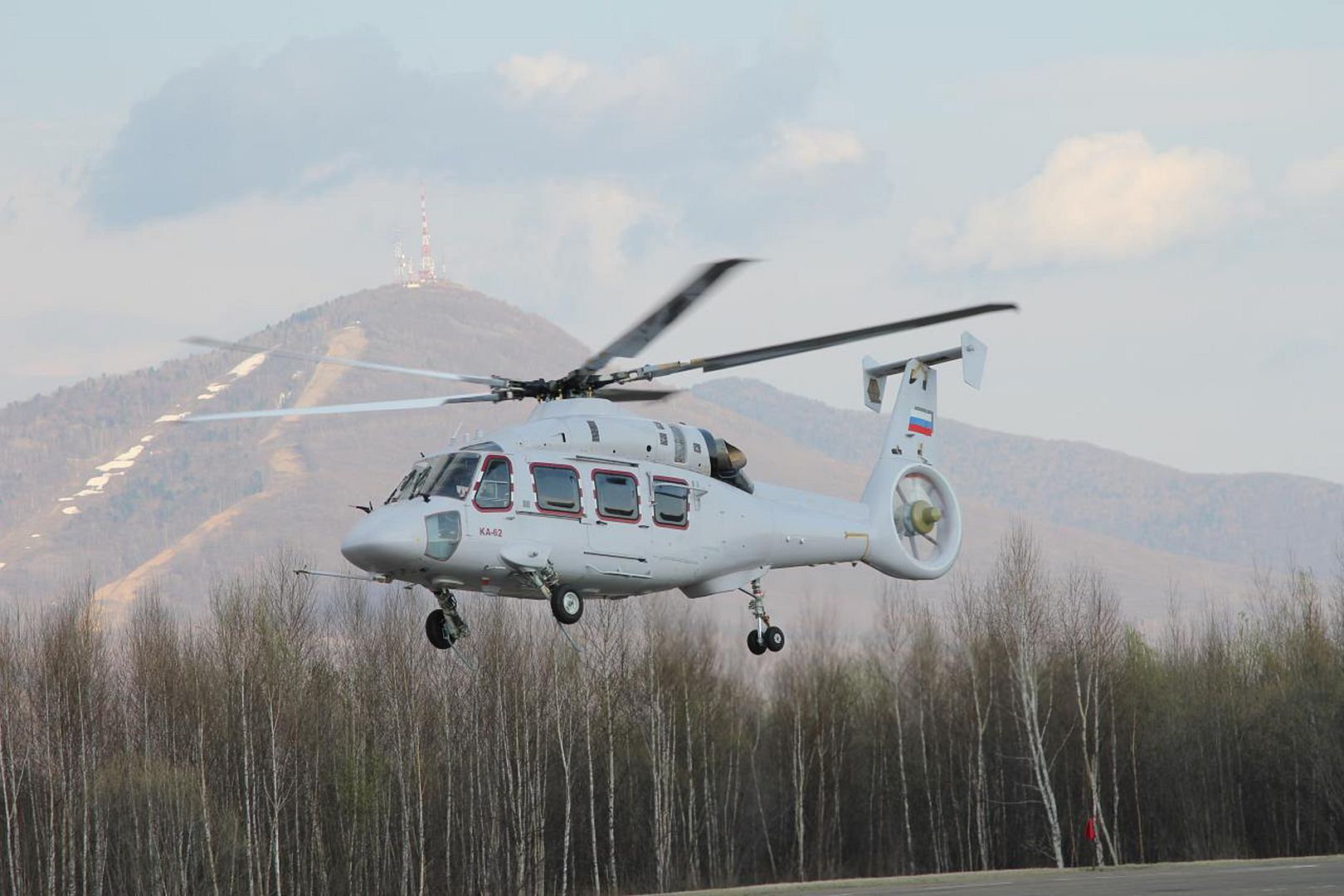
A Coast Guard helicopter crew poses for a group photo after transfering a fisherman to the AtlantiCare Regional Medical Center Mainland Campus in Galloway, N.J., Sunday, May 1, 2016. The helicopter crew medevaced the 63-year-old man after fell ill aboard the 90-foot fishing vessel Linda 60 miles southeast of Atlantic City. (U.S. Coast Guard photo)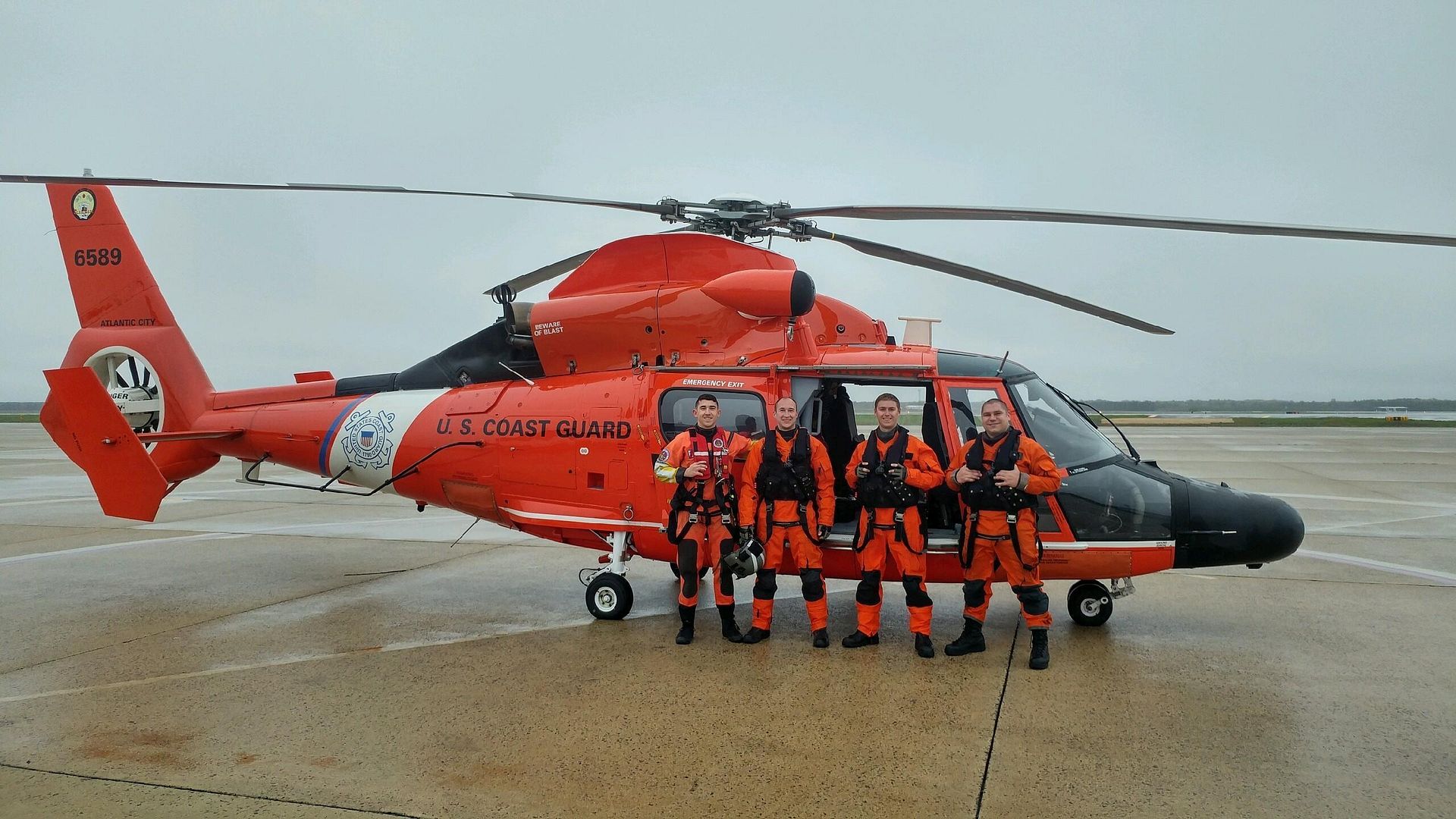
LA PAZ, May 2, 2016 ? The Boeing (NYSE: BA) 737 MAX 8 has marked a key achievement after completing high altitude flight testing in La Paz, Bolivia. It?s the first international trip for the 737 MAX flight-test fleet.
The airport?s 13,300-foot (4,050-meter) altitude tested the MAX?s capability to take off and land at high altitudes, which can affect overall airplane performance.
?The engines and other systems performed well, as expected, under extreme conditions. That?s exactly what we wanted to see,? said Keith Leverkuhn, vice president and general manager of the 737 MAX program, Boeing Commercial Airplanes.
Flight testing for the 737 MAX is on schedule with three test airplanes having completed more than 100 flights combined. The fourth and final test airplane will make its first flight in the coming weeks. The program remains on track for first delivery in the third quarter of 2017.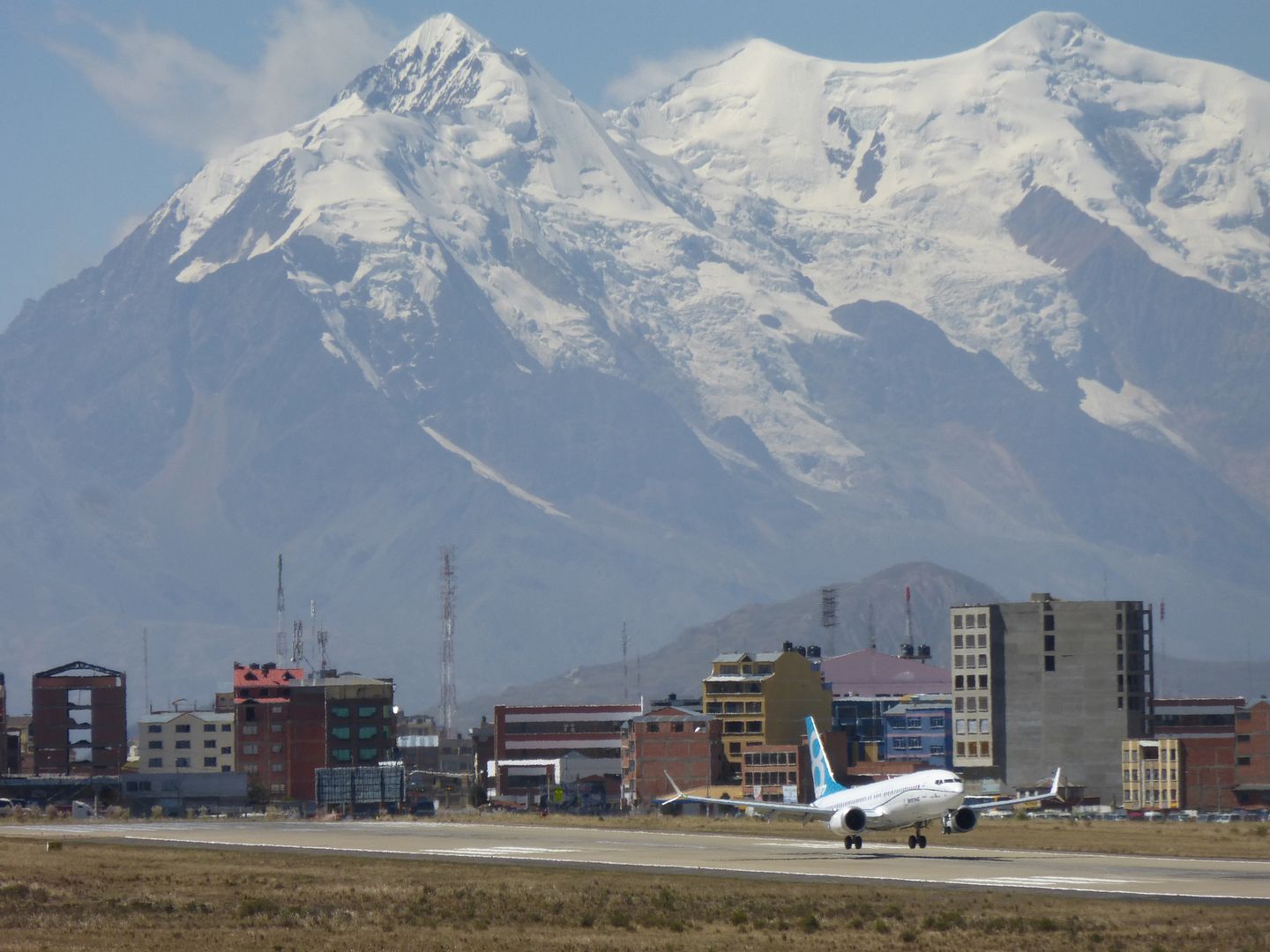

2 May 2016 Press Release
The US Federal Aviation Administration (FAA) has approved the Airbus A350-900 for ETOPS* (Extended-range Twin engine aircraft Operations) ?beyond 180 minutes? diversion time. This approval means that when the first FAA-affiliated operators start to take delivery of their A350s in 2017 they will be able to serve new direct non-limiting routings, compared with a standard 180 minute ETOPS diversion time. It also means that now the A350 XWB is approved by both EASA and the FAA for beyond 180 minutes ETOPS.
This FAA approval, which includes ?ETOPS 180min? in the basic specification, also includes provisions for up to ?ETOPS 300min? ? corresponding to a maximum diversion distance of 2,000 nautical miles (nm) at one-engine-inoperative speed under standard atmospheric conditions. Later this year, once the type accumulates additional in-service experience, it will be granted a further provision for ?ETOPS 370min? from the FAA, which will extend the maximum diversion distance up to 2,500nm.
The ETOPS 300min option will, in particular, facilitate more efficient transoceanic routes across the North and Mid-Pacific ? such as from South-East Asia to US, and Australasia to the US. Meanwhile, operators flying on existing routes (currently flown with up to 180 minute diversion time) will be able to traverse straighter more fuel efficient flight paths with lower CO2 emissions, while also allowing access to more en-route diversion airports if needed.
The granting by the FAA of this ETOPS capability prior to the A350?s delivery to US-based operators is a testimony to the FAA?s confidence in the aircraft maturity and in US operators who will soon operate the A350 XWB (including: American Airlines, Delta Air Lines and United Airlines) ? as well as the type?s demonstrated performance with the five current operators since its entry into service in 2015.
The A350 XWB is Airbus? all-new mid-size long range product line and a member of Airbus' leading Widebody family. The type sets new standards in terms of passenger experience, operational efficiency and cost-effectiveness. Around 70 percent of A350 flight hours will be ETOPS. At the end of March 2016, the A350 XWB had won 777 orders from 41 customers worldwide.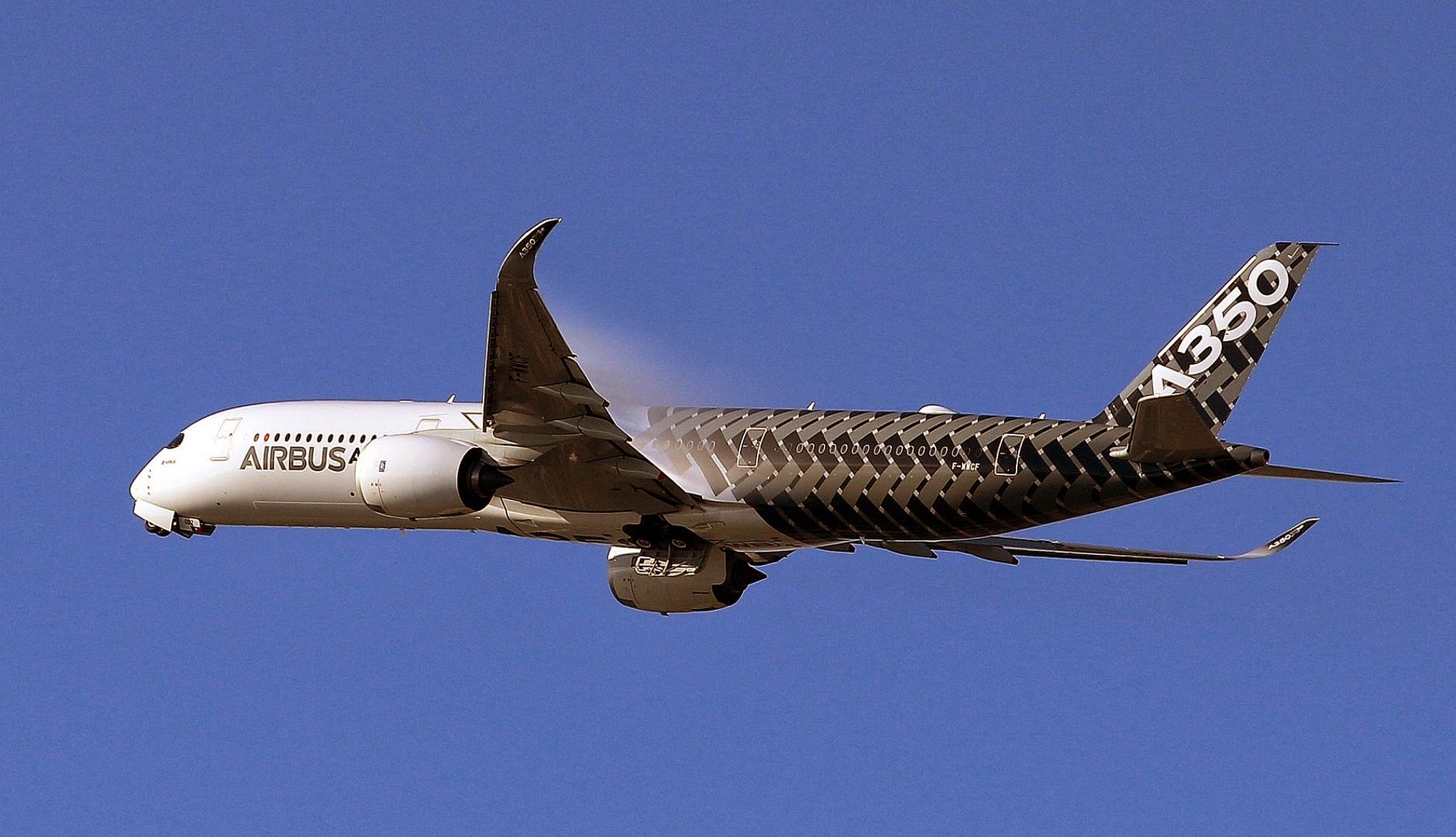
-
 Main AdminLUANDA, Angola, May 3, 2016 ? Boeing [NYSE: BA] and TAAG Angola Airlines, the national airline of Angola, celebrated the delivery of the airline's newest 777-300ER (Extended Range). The latest addition to TAAG?s fleet touched down in Luanda today following a non-stop 8,709 nautical mile (14,015 kilometers) delivery flight from Boeing's Delivery Center in Everett, Wash.
Main AdminLUANDA, Angola, May 3, 2016 ? Boeing [NYSE: BA] and TAAG Angola Airlines, the national airline of Angola, celebrated the delivery of the airline's newest 777-300ER (Extended Range). The latest addition to TAAG?s fleet touched down in Luanda today following a non-stop 8,709 nautical mile (14,015 kilometers) delivery flight from Boeing's Delivery Center in Everett, Wash.
The latest 777-300ER enables TAAG to augment its flagship service between Angola and Portugal, which increases to double daily effective June 2, 2016.
"The 777-300ER forms the backbone of TAAG?s long-haul fleet,? said Peter Hill, Executive Chairman TAAG. ?Today?s delivery means we are now the largest operator of 777?s in southern Africa, offering passengers an unrivalled onboard experience to our international destinations from the region.?
The 777-300ER is the most fuel and cost-efficient airplane in its class as well as the most reliable twin-aisle aircraft in the world. It also has the highest cargo capability of any passenger airplane. The 777-300ER will receive further improvements in 2016 designed to reduce fuel use by two percent.
"We are honored that TAAG continues to place its trust in our products," said Van Rex Gallard, vice president sales Latin America, Caribbean and Africa, Boeing Commercial Airplanes. "The 777-300ER will provide TAAG?s network with greatly improved efficiencies and it's a great source of pride for everyone here that it continues to be an all-Boeing carrier.?
The 777-300ER has consistently won many accolades including "Best Aircraft Type" based on passenger preference polls, "Best in Class" based on fuel burn, passenger load cost and performance and "Best Residual Value for a Twin Aisle Airplane" among others.
TAAG Angola Airlines, based at Quatro de Fevereiro Airport, Luanda, serves 31 domestic and international destinations with a fleet of 14 airplanes, including 737s and 777-200ERs.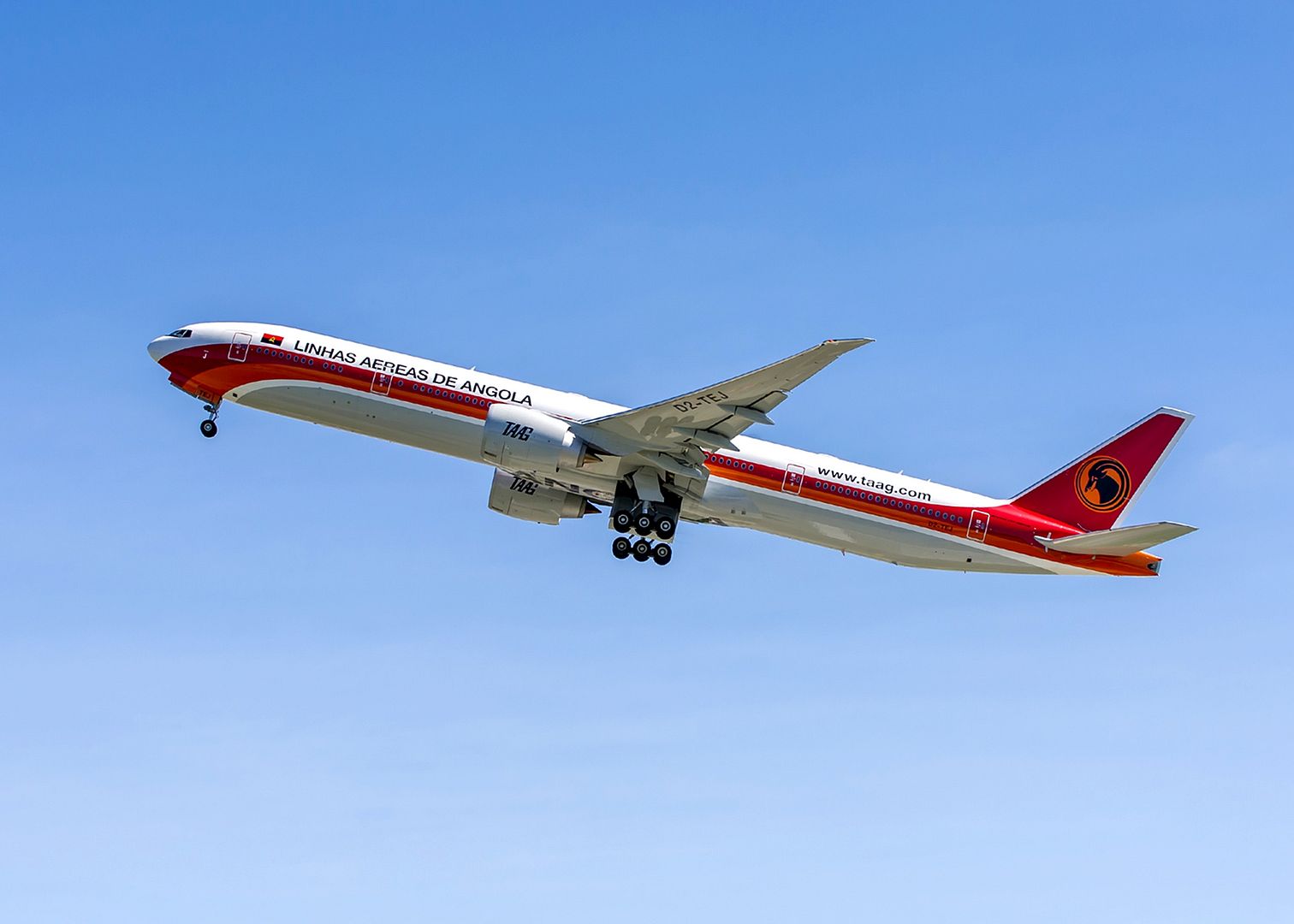
MCCONNELL AIR FORCE BASE, Kan. (AFNS) -- Sixty-year-old KC-135 Stratotankers from McConnell Air Force Base recently supported the new KC-46A Pegasus testing and evaluation missions in Washington.
The KC-135s, which currently serve as the backbone of the air refueling fleet, provided refueling support to receiver and chase aircraft participating in the KC-46A test program, said one of the crewmembers on the flight. The 22nd Air Refueling Wing crew also acted as a contingency plan refueler in case of any mission difficulties.
Since the KC-46A is not yet cleared as a refueler, the KC-135's presence is crucial in allowing receiver and chase aircraft to be refueled, thereby extending the amount of times they can stay in the air and participate in testing.
"We were flying all different formation positions to check out the plane," said Capt. Alex Durstein, a 344th Air Refueling Squadron instructor pilot. "I valued the experience to see the new aircraft and be on a mission that was directly supporting getting the aircraft out in the field."
Before being cleared for operation, each receiver aircraft must be tested for the effects of wake turbulence while approaching and being refueled by the KC-46A, Durstein said. The testing consists of the receiver aircraft approaching the KC-46A at varying speeds and distances from the boom to ensure it is operating within specifications.
"When we weren't flying, we were on cockpit alert status as a backup," said Maj. Jason Barry, a 350th ARS instructor evaluator pilot. "We watched all the testing that was done while in formation, listening on the radio to directives and refueling both aircraft as they needed it."
As part of on-going testing, the KC-46A test aircraft are flying out of Boeing Field in Seattle. The KC-135 and McConnell aircrew met up with the KC-46A and receiver aircraft mid-mission over Washington and set up two miles in trail or waited in orbit during frequent altitude changes to refuel the chase aircraft, Durstein said.
"They checked out the wake turbulence at different positions," Durstein said. "The fighter would come 5 (degrees) to the right, 10 (degrees) to the right, back to center, and then off to the other side to see if it met standards."
The KC-46A is equipped with advanced electronic displays and controls for improved system performance, Barry said.
With more refueling capacity and enhanced capabilities, improved efficiency and increased capabilities for cargo and aeromedical evacuation, the KC-46A will provide aerial refueling support to the Air Force, Navy, Marine Corps, and allied nation coalition force aircraft, according to the Air Force KC-46A factsheet.
"It is truly a very capable and advanced aircraft," Durstein said. "They were testing it in air refueling benchmarks, which we do not typically do in the KC-135. (The KC-46A) will allow us to perform more aerial refueling missions within a restricted air space with more varied altitudes."
The KC-46A will join the KC-135 tanker mission in worldwide aerial refueling operations, with the first main operating base being McConnell AFB. The first KC-46A is currently scheduled to arrive here in spring 2017.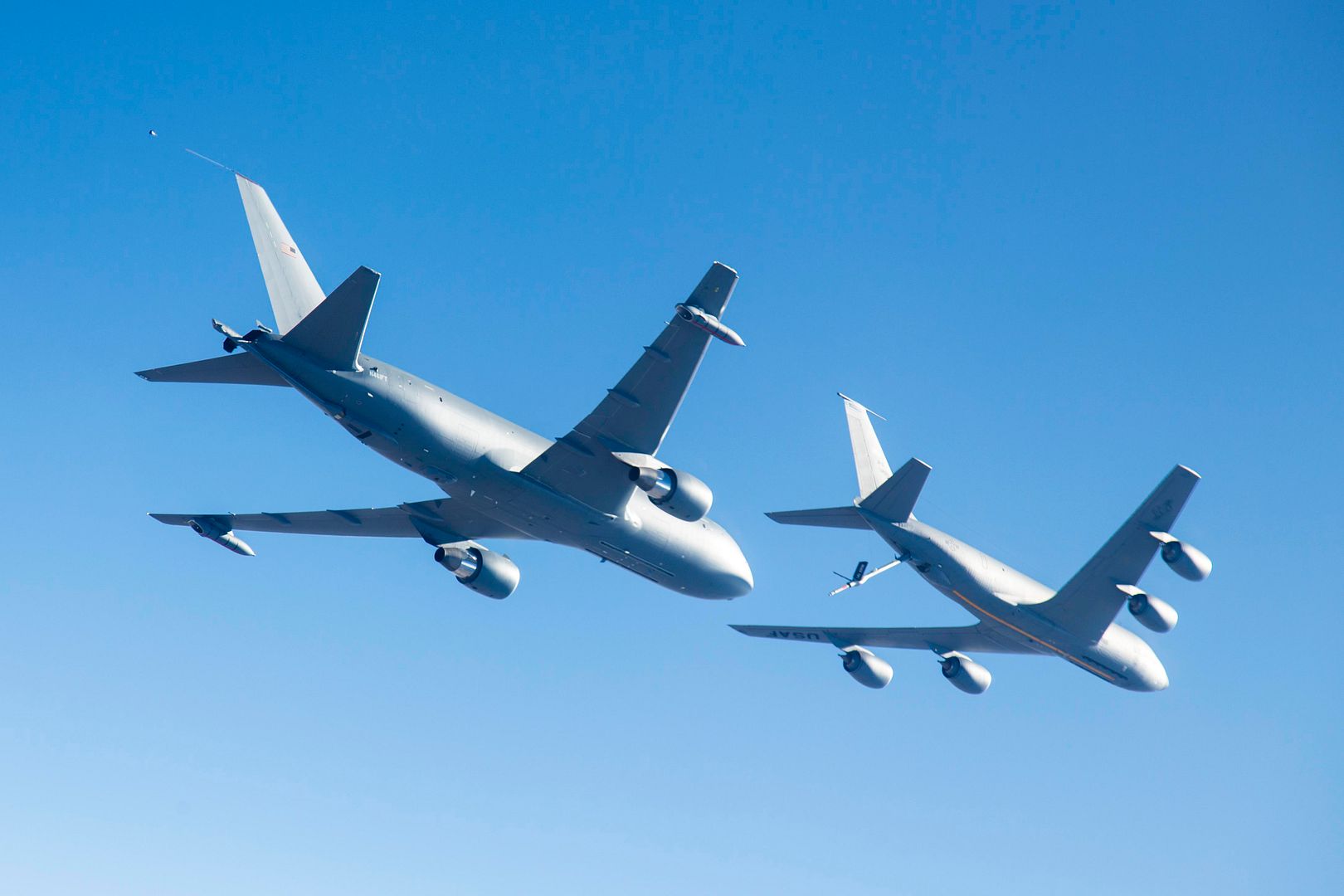
-
 Main AdminBiggin Hill Kent
Main AdminBiggin Hill Kent
First flight of Spitfire Vb EP122 this morning.
From Here - https://www.facebook.com/BigginHillHeritageHangar/?fref=photo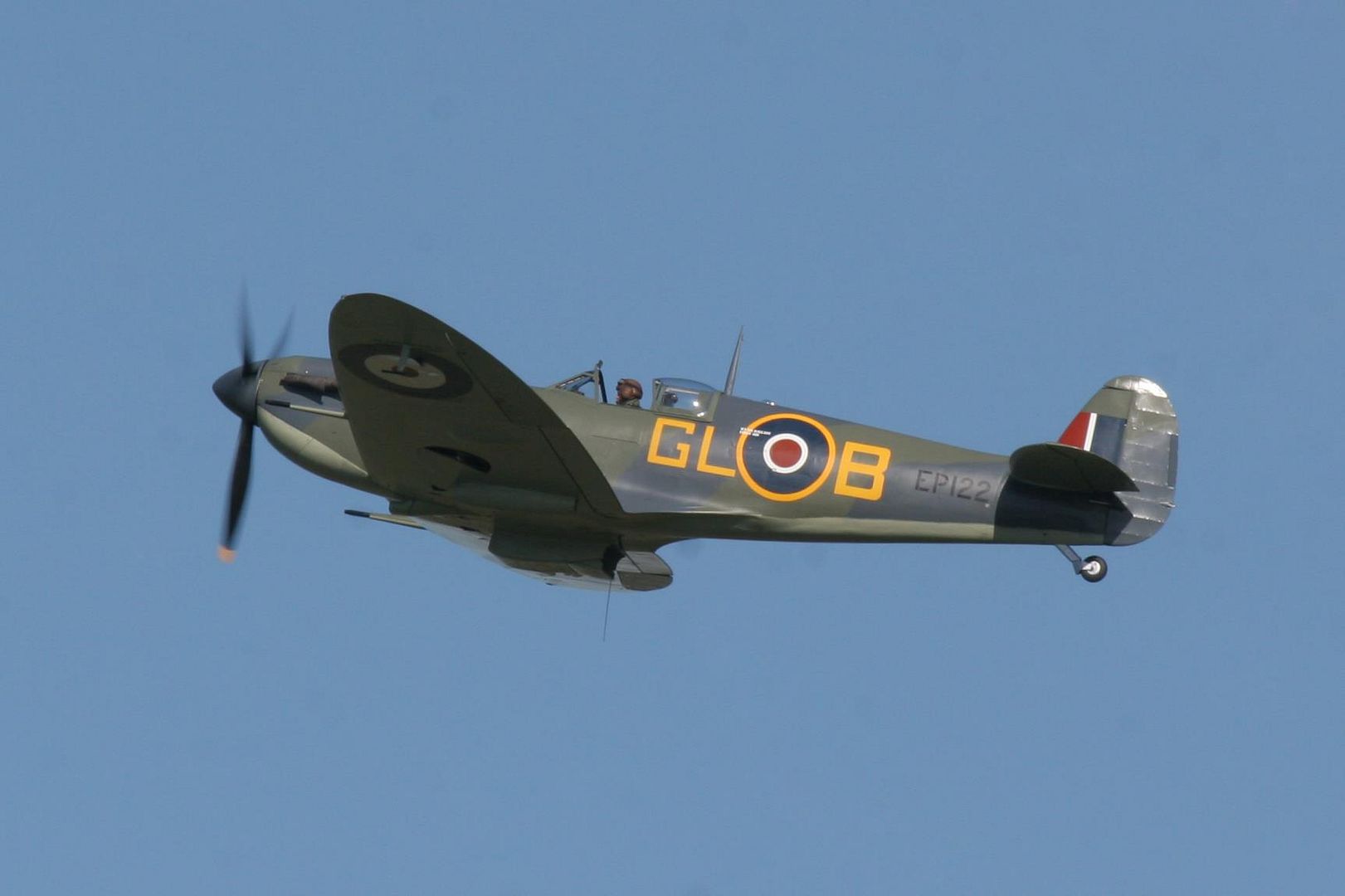
U.S. Air Force Jan Stahl, 64th Aggressor Squadron pilot from Nellis Air Force Base, Nevada, refuels while augmenting the 18th Aggressor Squadron May 3, 2016, during RED FLAG-Alaska (RF-A) 16-1 at Eielson Air Force Base, Alaska. Pilots from both squadrons augment RF exercises to help broaden their flying skill sets and to help train DoD and partner nation pilots. (U.S. Air Force photo by Staff Sgt. Shawn Nickel/Released)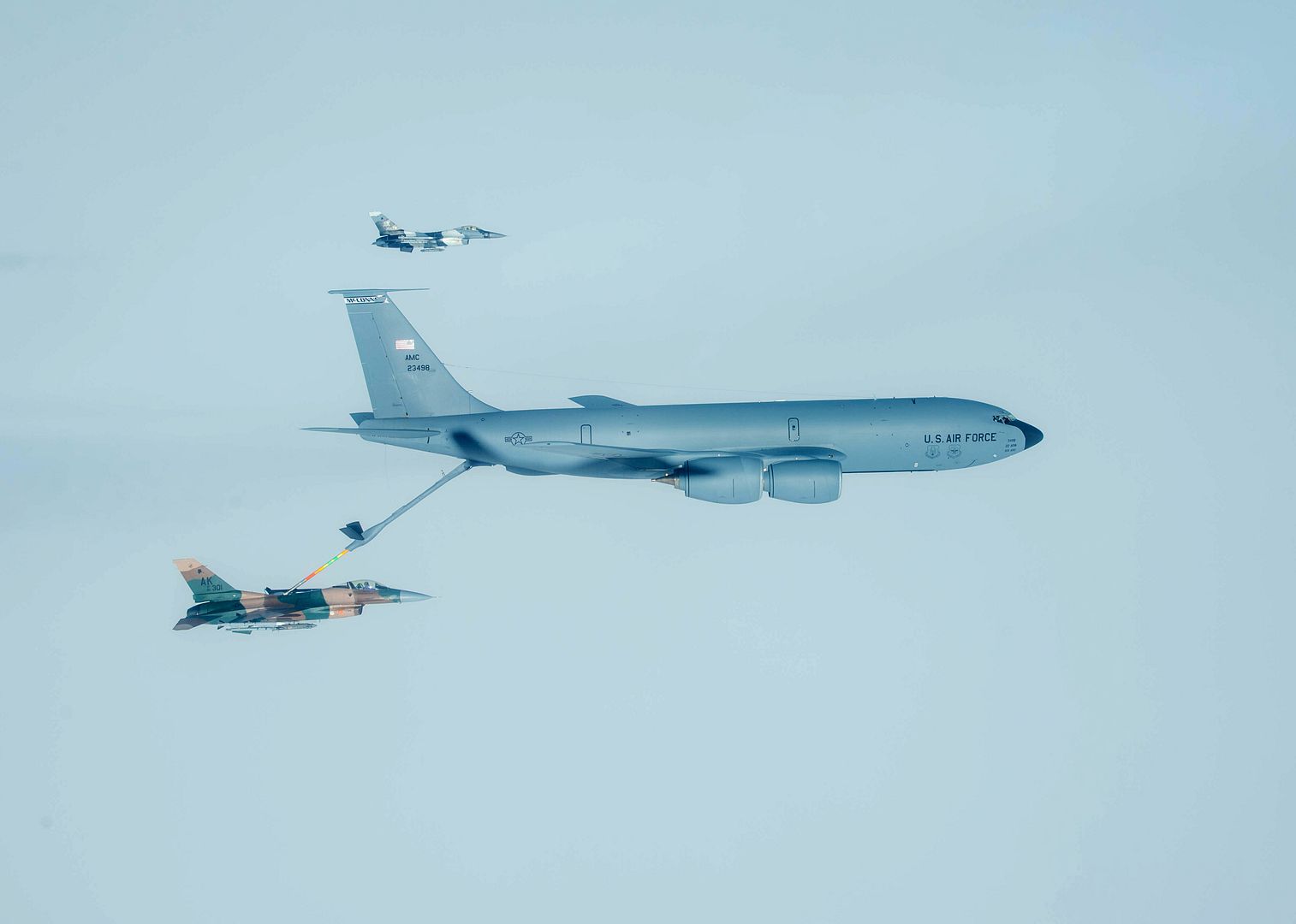
KC-130 aircraft from VMGR-152 prepares to practice airial demonstration routines at Marine Corps Air Station Iwakuni, Japan, May 4, 2016. The aircraft are scheduled to appear in the MCAS Iwakuni Friendship Day 2016 Air Show. (U.S. Marine Corps photo by Lance Cpl. Jacob A. Farbo/ Released)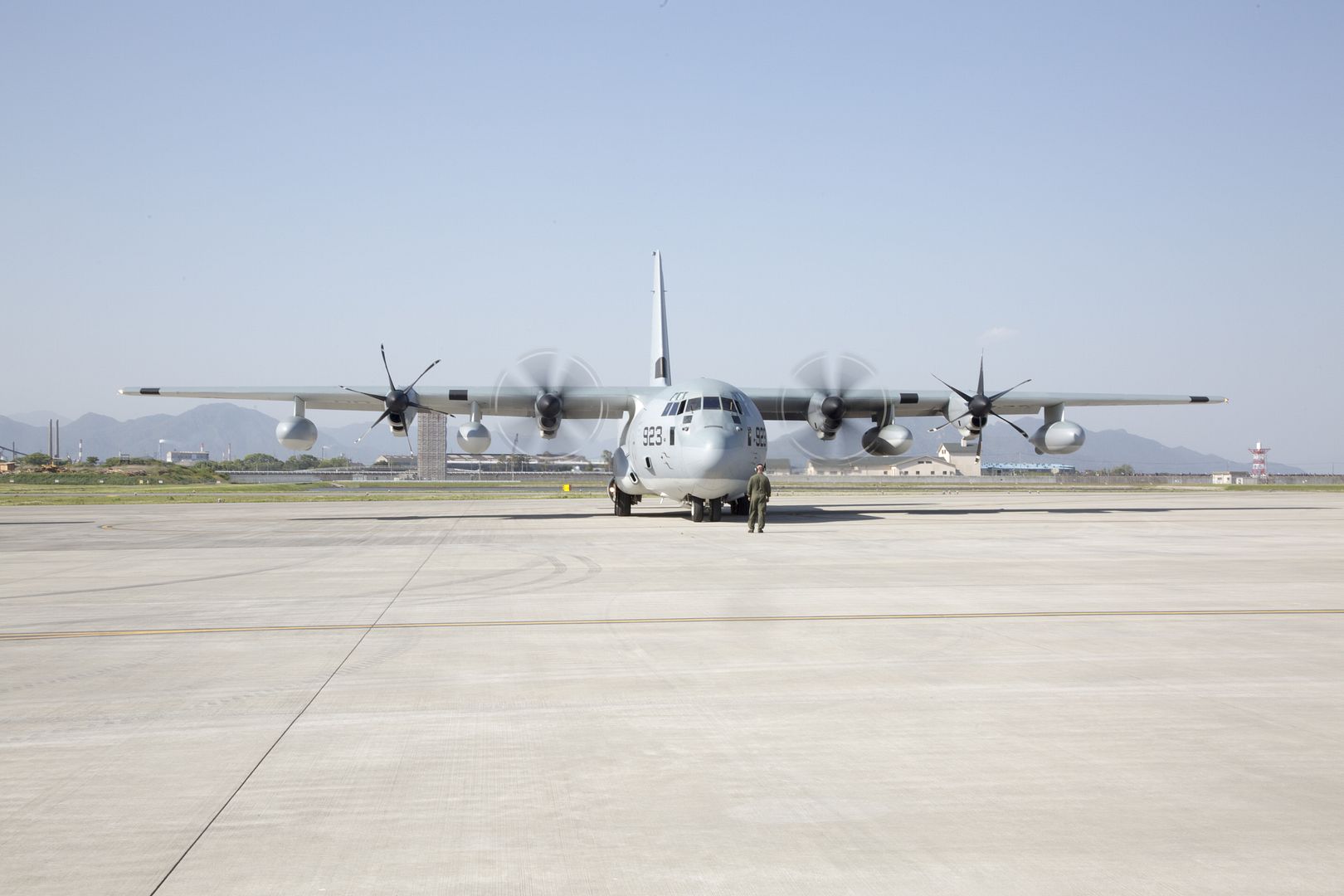
-
 Main AdminAn F-16 Fighting Falcon from the 35th Fighter Squadron taxis on the runway during Beverly Midnight 16-3 at Kunsan Air Base, Republic of Korea, May 4, 2016. The exercise tested Airmen on their ability to survive and operate while under the stress of simulated wartime activities all while ensuring raipid aircraft generation. (U.S. Air Force photo by Staff Sgt. Nick Wilson/Released)
Main AdminAn F-16 Fighting Falcon from the 35th Fighter Squadron taxis on the runway during Beverly Midnight 16-3 at Kunsan Air Base, Republic of Korea, May 4, 2016. The exercise tested Airmen on their ability to survive and operate while under the stress of simulated wartime activities all while ensuring raipid aircraft generation. (U.S. Air Force photo by Staff Sgt. Nick Wilson/Released)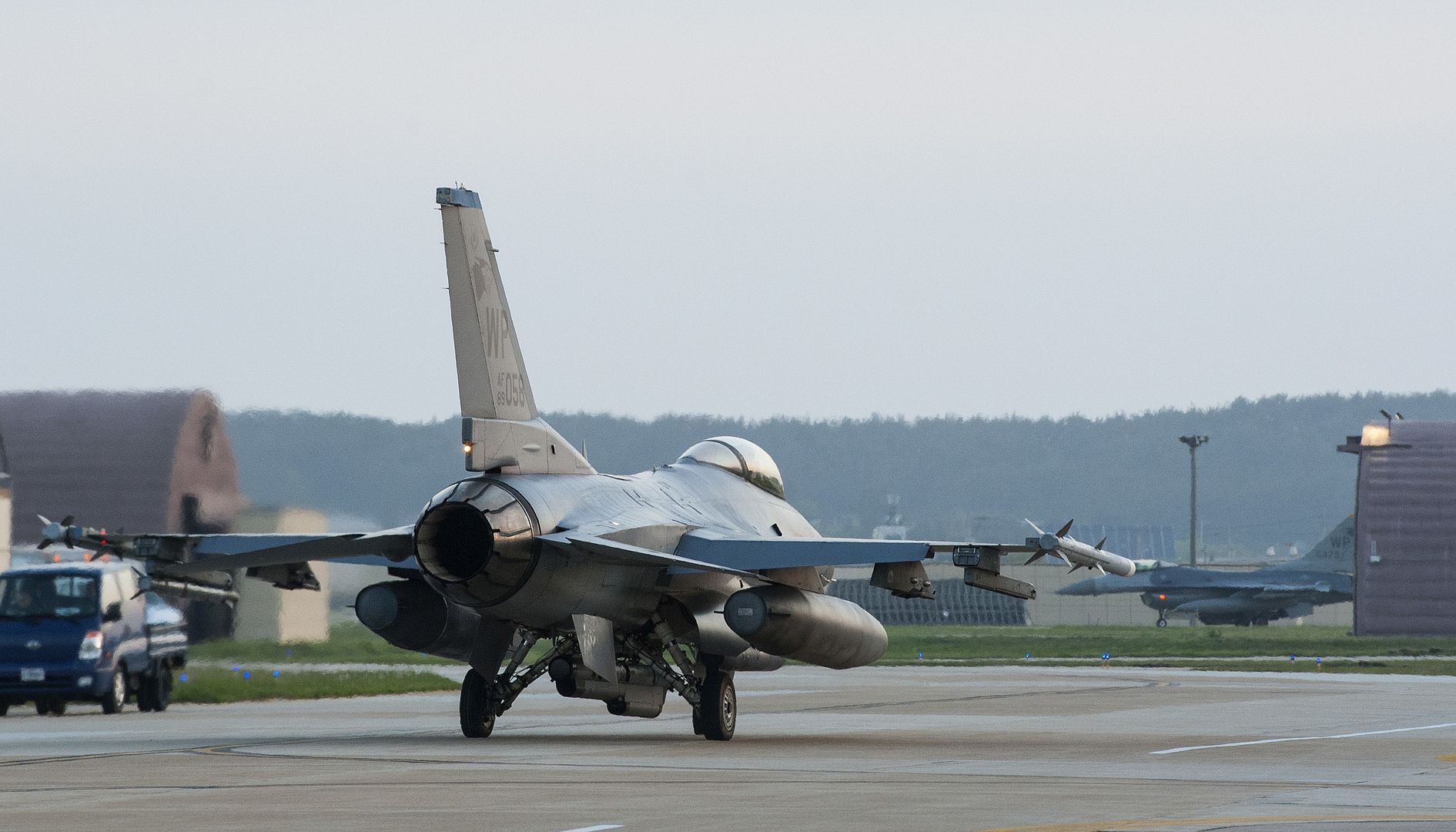
F-16 Fighting Falcon pilots from the 35th Fighter Squadron perform preflight checks during Beverly Midnight 16-3 at Kunsan Air Base, Republic of Korea, May 4, 2016. The exercise accentuated the importance of maintaining heightened readiness and aircraft alert levels to ensure security on the Korean peninsula. (U.S. Air Force photo by Staff Sgt. Nick Wilson/Released)
04 May 2016
In honour of Latvian Independence Day, a flypast took place over Kraslava by a Typhoon aircraft from II (Army Co-operation) Squadron of the Royal Air Force, who are undertaking Baltic Air Policing.
Lifting from ?mari Air Base in neighbouring Estonia, the state of the art Typhoon FGR.4, streaked across the sky above Kraslava at midday. Below it a parade of over 600 military personnel and equipment marked the restoration of the independence of The Republic of Latvia. The Parade, which has taken place every year since 2012, was attended by dignitaries including the Latvian President Raimonds Vejonis, Minister of Defence Raimonds Bergmanis and the Commander of the Latvian Army, Raimonds Graube.
Following the Parade the Latvian Minister of Defence Raimonds Bergmanis said;
?The participation of our allies in the Baltic Air Policing mission provides a very clear narrative about the unity of NATO. I am grateful to our allies for their service and guarantees they provide to Latvia's security. Latvia and its air space is now better protected than ever before?.
Upon landing at ?mari Air Base, the Royal Air Force pilot involved in the fly past said;
?A key element of the Royal Air Force?s mission in the Baltics is the reassurance of our NATO allies. Flights like todays are a key opportunity for all NATO nations to demonstrate their commitment to the alliance.?
Four Typhoon aircraft are now in Estonia as 140 Expeditionary Air Wing (EAW) of the Royal Air Force takes its turn on the NATO mission to secure the skies above the Baltic States.
The Typhoons will be ready to investigate any aircraft not adhering to international flight procedures ? ensuring the same airspace integrity for the Baltic States as in any of the NATO countries. This mission has been carried out continuously since 2004 by 17 nations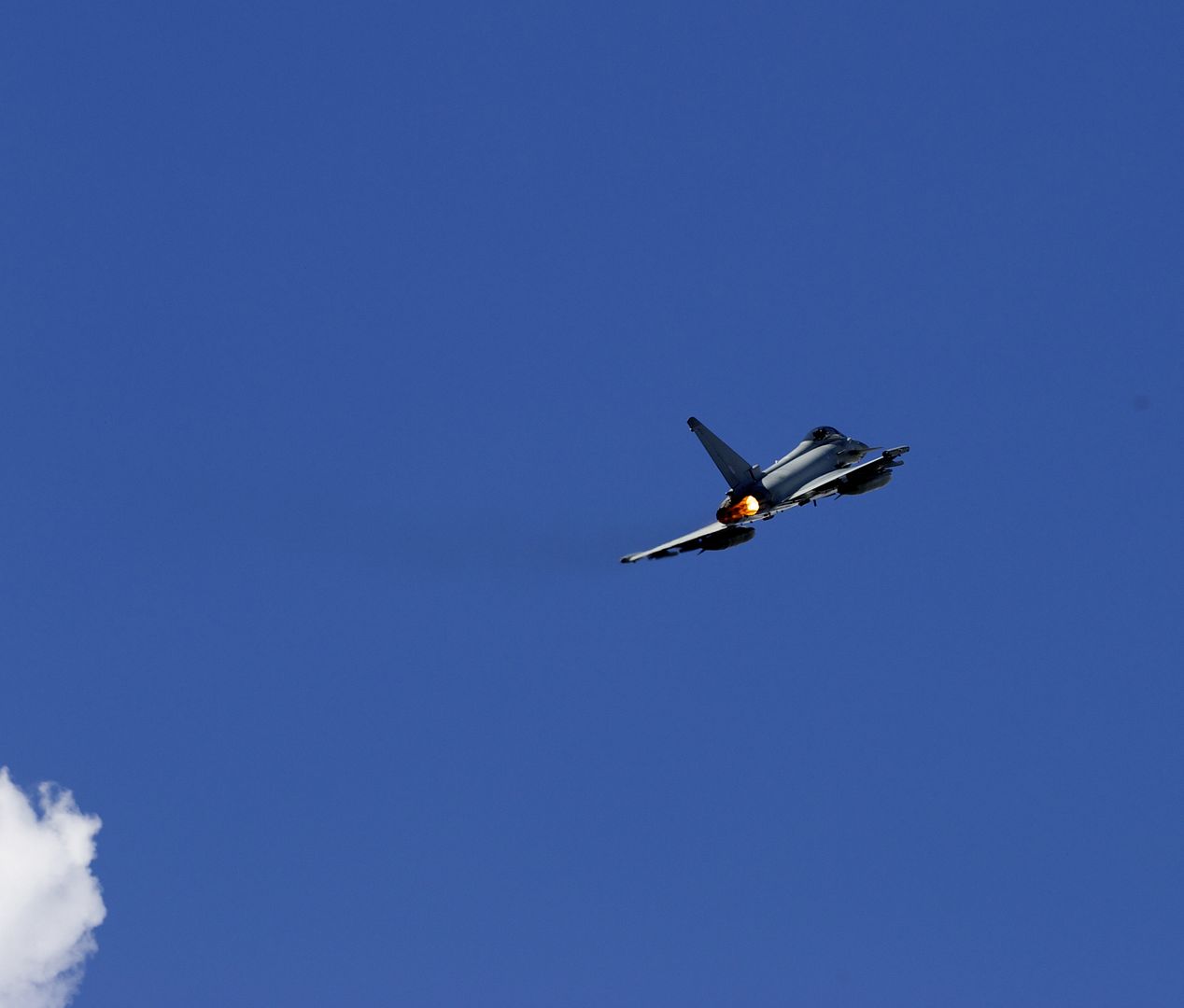
An AV-8B Harrier with UNIT hovers in front of a crowd during the Marine Corps Air Station Iwakuni Friendship Day 2016 Air Show, May 5, 2016. Since 1973, MCAS Iwakuni has conducted a single-day air show and open house specifically designed to foster positive relationships between the air station and our Japanese hosts, and the event traditionally draws more than 200,000 visitors and participants. This year is the 40th Friendship Day, offering a culturally enriching experience that displays the mutual support that the U.S. and Japan share. This annual event showcases a variety of static displays, aviation performances and demonstrations, and provides food and entertainment for guests of the largest single-day event in Iwakuni. (U.S. Marine Corps photo by Cpl. Nathan Wicks/Released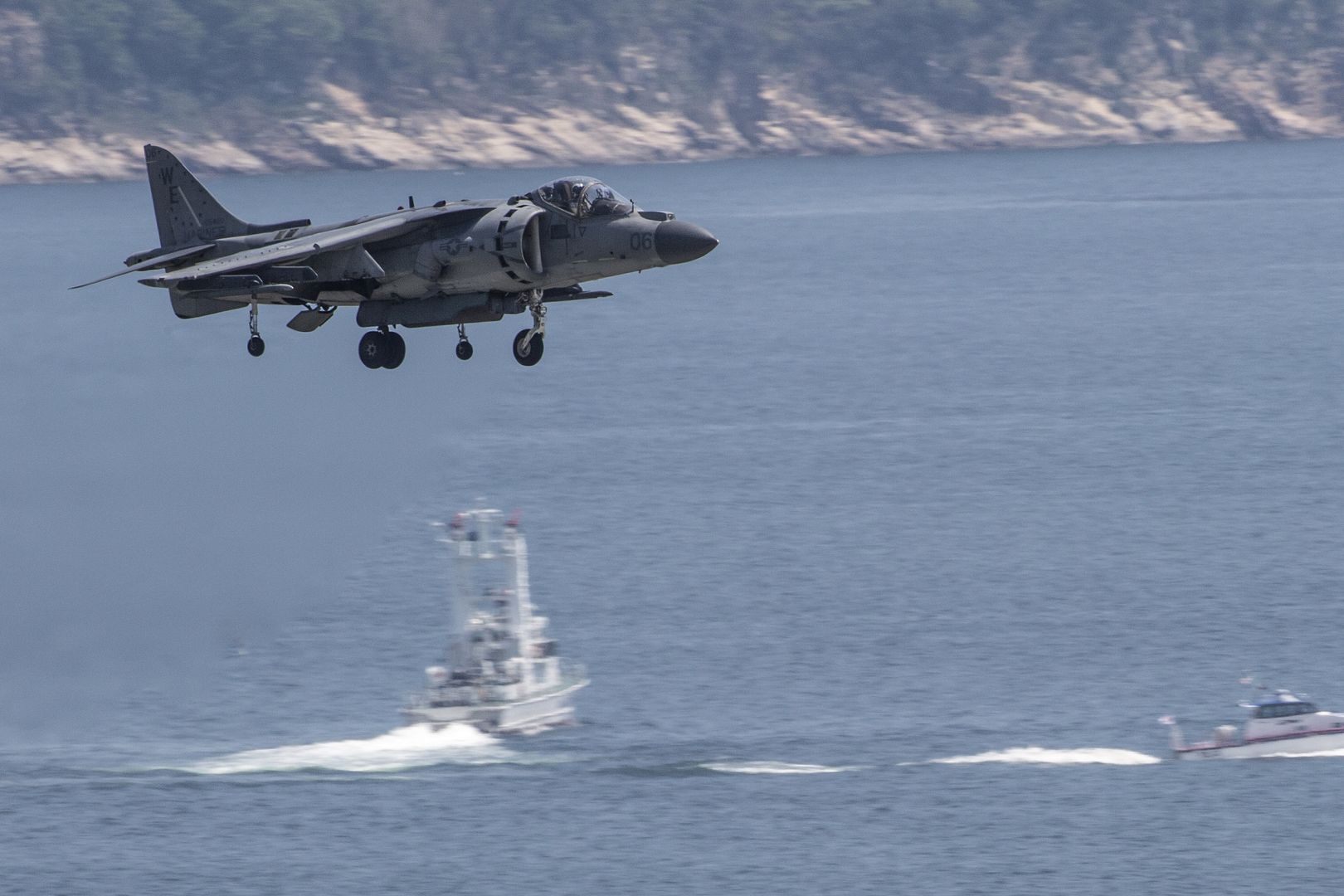
RAF Fire Crews train alongside their Estonian counterparts on Op Azotize.
The Typhoon FGR.4 of the Royal Air Force, has reported a fault with its on-board 27mm cannon. As the aircraft comes to a halt, the fire crews move as one in well-rehearsed drills, and render the weapon safe; the whole event is over in less than 5 minutes.
Thankfully the incident described above was not for real, but part of a training programme designed to increase the operational effectiveness of UK and Estonian personnel currently taking part in Op Azotize; the NATO mission to secure the skies above the Baltic States.
Four Typhoon aircraft have now taken up station in Estonia as 140 Expeditionary Air Wing (EAW) of the Royal Air Force takes its turn to ensure that the airspace around Estonia, Latvia and Lithuania is protected against any potential incursion by unidentified aircraft.
Typhoons from II (Army Co-operation) Squadron from RAF Lossiemouth will be ready to investigate any aircraft that does not adhere to international flight procedures ? ensuring the same airspace integrity for the Baltic States as in any of the NATO countries. This mission has been carried out continuously since 2004 by 17 nations.
As the primary support element to Op Azotize,140 EAW are tasked with ensuring that all aspects of the deployment operate as smoothly as possible; particularly the integration with the host nation.
The importance of conducting joint training alongside the Estonians was emphasised by the 140 EAW Detachment Fire Officer, who said;
?Working with the Estonian Fire Service represents a unique opportunity for a Royal Air Force Firefighter. Any initial challenges with the language barrier have been overcome through professionalism and mutual respect to ensure the safety of aircrew and base personnel. We have built an excellent working rapport and the friendships forged here will last far beyond the completion of Op Azotize.?
This sentiment was echoed by his Estonian counterpart, Estonian Air Force Firefighter, Ants Kari, who said;
?It?s great working with the Royal Air Force and learning from their vast operational experience. Despite the language differences we have so much in common; I am even leaning to understand the British sense of humour!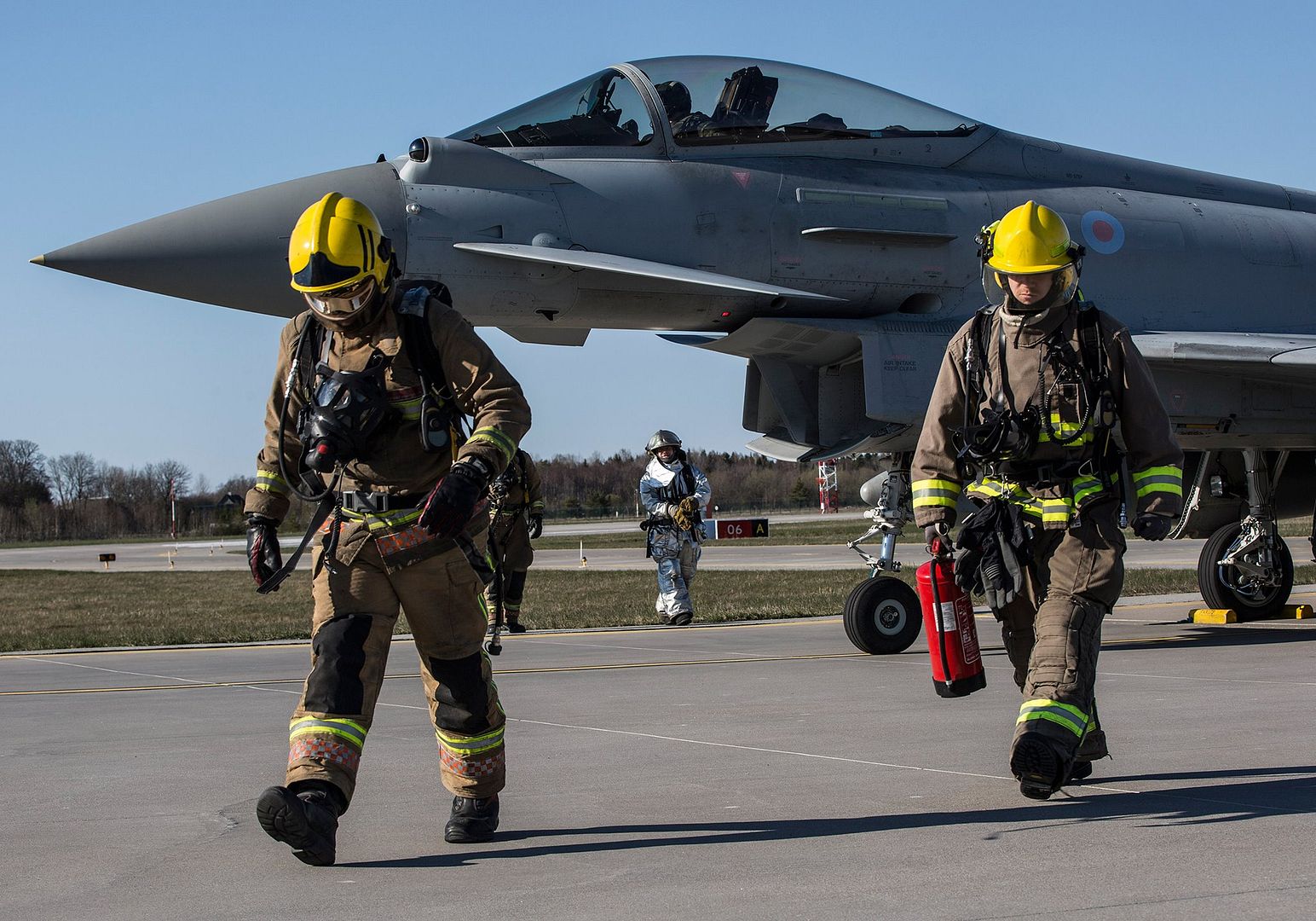
4 May 2016
A C-130 Hercules crew from the Royal New Zealand Air Force (RNZAF) was judged the top performing crew in a multi-national exercise held in the United States.
Seventeen crews from four countries (Australia, New Zealand, Sweden, and the United States) took part in Exercise Green Flag, in Little Rock, Arkansas from 15-25 April 2016.
The RNZAF crew from 40 Squadron, led by aircraft captain Flight Lieutenant (FTLT) Alex Tredrea, took out the ?Top Cat? award as best overall crew, based on criteria such as accuracy of air drops, time on target, planning and tactics used, and ability to react to short-notice changes.
Exercise Green Flag is an operational preparedness training exercise aimed at providing realistic experience of working with other militaries in a combat environment. In this case the RNZAF crew were in support of the US 101st Airborne Division fighting a simulated ground war.
Detachment Commander, Squadron Leader (SQNLDR) Leigh Foster said the exercise required the RNZAF crew to conduct airdrops delivering food, water, and weapons and also undertake missions to deliver vehicles, large weaponry, ammunition and personnel to the army to ensure positions were attained and maintained.
?The feedback was that the flexibility and operational focus our crew displayed was outstanding,? SQNLDR Foster said.
The RNZAF participate in annual routine training exercises such as Green Flag to build and maintain the skills and capabilities required in a real-world situation.
-
9 years ago
 Level 1CFM International receives joint EASA / FAA certification for LEAP-1B engine
Level 1CFM International receives joint EASA / FAA certification for LEAP-1B engine
The CFM International joint venture has been awarded type certificates by the European Aviation Safety Agency (EASA) and the US Federal Aviation Administration (FAA) for its advanced LEAP-1B engine.
The certification enables the engine to enter into commercial service next year. This January, the LEAP-1B engine flew for the first time on a Boeing 737 MAX aircraft, with subsequent test flights conducted on two more aircraft.
All three aircraft have so far collectively completed more than 100 test flights, including a recent high-altitude flight testing in La Paz, Bolivia. LEAP-1B engine features several new technologies, including 3D woven carbon fibre composite fan blades and fan case; a debris rejection system; fourth-generation 3D aerodynamic designs; twin-annular, pre-swirl (TAPS) combustor featuring additively manufactured fuel nozzles; ceramics matrix composite shrouds in the high-pressure turbine; and titanium aluminide (Ti-Al) blades in the low-pressure turbine.
Compared with other CFM engines, the LEAP-1B engine is expected to provide improvements in fuel consumption and CO2 emissions, as well as reductions in engine noise and gaseous emissions.
CFM International executive vice-president Francois Bastin said: "Boeing is racking up an impressive number of flight hours with the test aircraft and initial indications are that engine performance is meeting expectations." As of January, a total of 6,144 LEAP-1B engines had been ordered to power 3,072 MAX aircraft family from 62 customers. -
9 years agoFri May 06 2016, 08:50pm
 Main AdminSolenzara French Air Force and NATO tactical training center airbase in Corsica.
Main AdminSolenzara French Air Force and NATO tactical training center airbase in Corsica.
Has been used by the Patrouille de France for training recently.
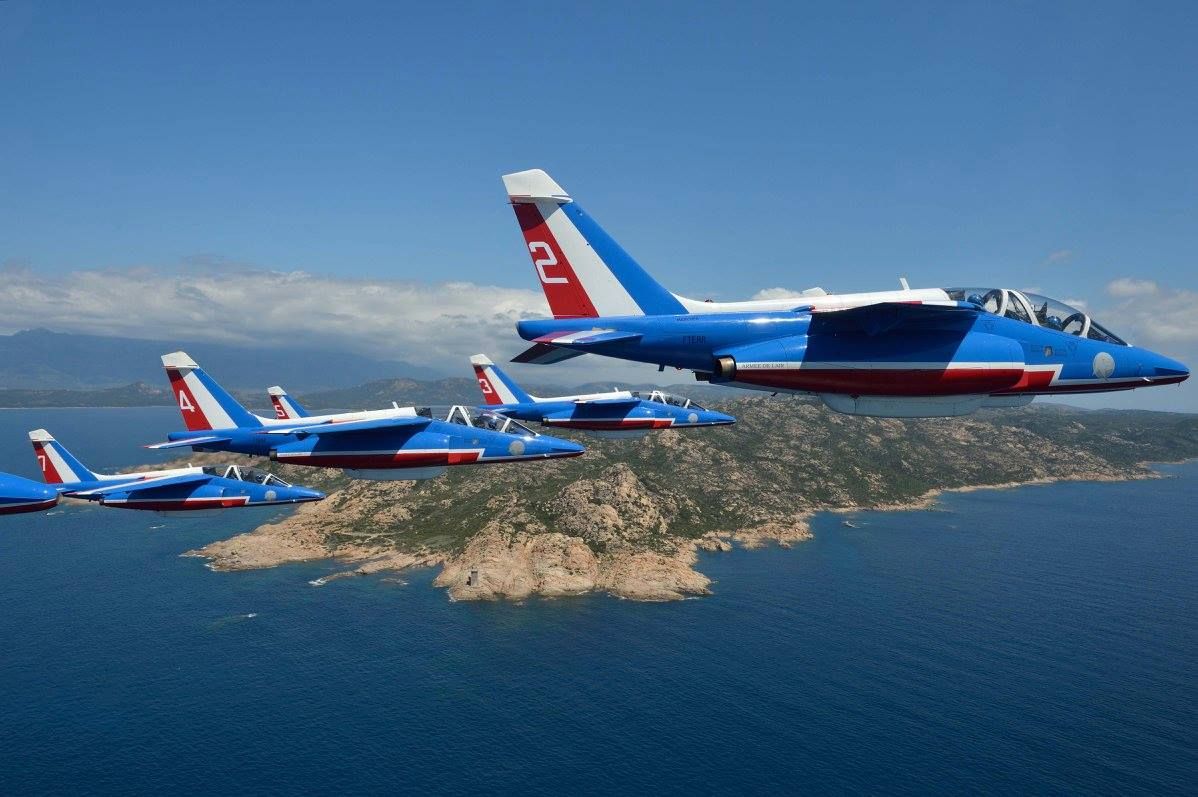

Originating in 1931, it is the world's oldest and one of the most skilled demonstration teams.
The U.S. Air Force's 45th Space Wing supported the successful SpaceX Falcon 9 JCSAT-14 launch May 6 at 1:21 a.m. EDT from Launch Complex 40 here. JCSAT-14 is a communications satellite designed and manufactured by Space Systems/Loral for SKY Perfect JSAT Corporation based in Tokyo, Japan. The satellite is designed to provide TV programming and broadband services in Japan, Asia, Oceania, Russia and the Pacific region for at least 15 years, replacing an older satellite called JCSAT-2A. (Courtesy photo's by SpaceX)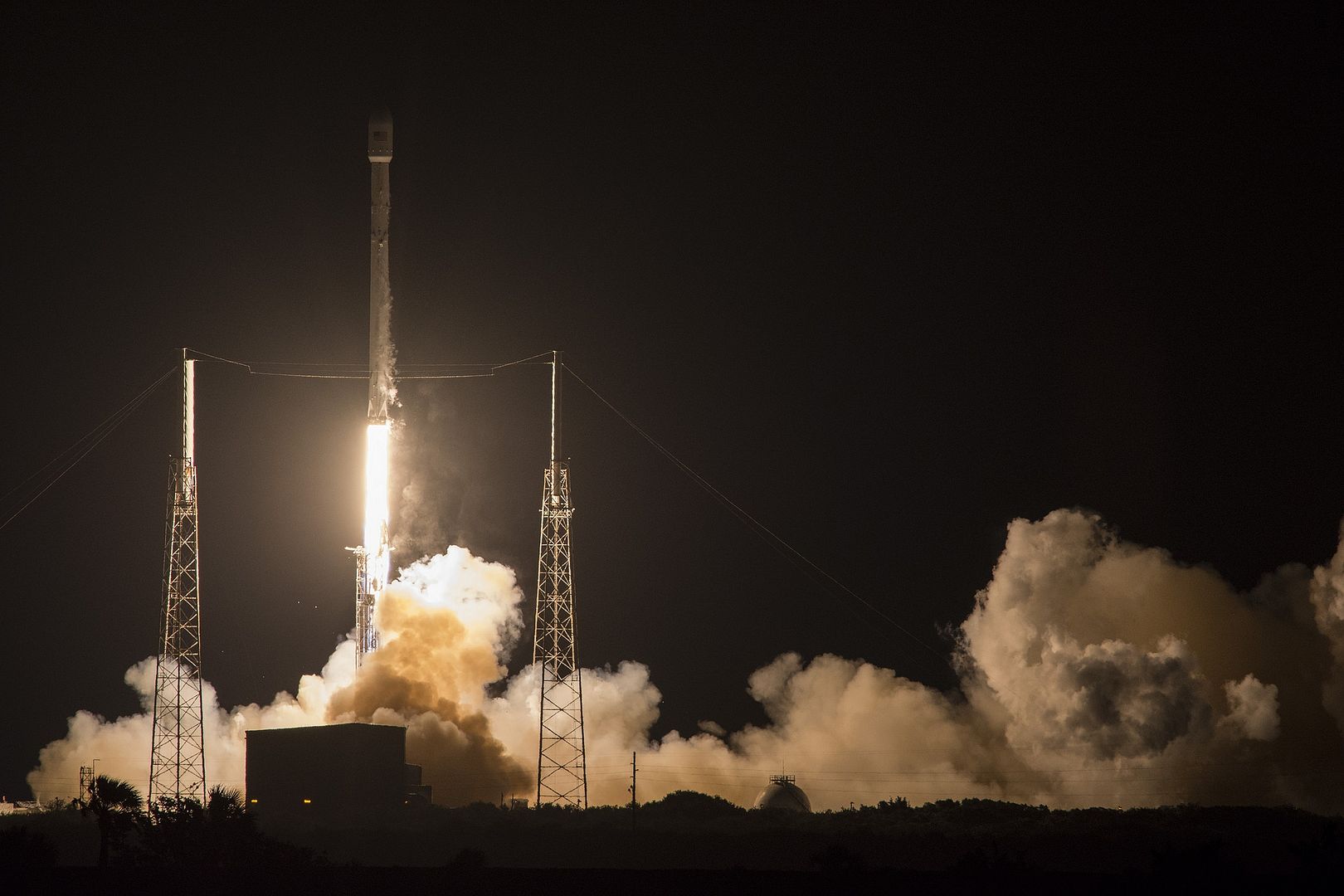

The 28th Bomb Wing?s first B-1B Lancer upgraded with Sustainment Block-16 touches down at Ellsworth Air Force Base, S.D., May 2, 2016. With the upgraded B-1?s return from Tinker AFB, Okla., Ellsworth Airmen will be able to put their training from the IBS-updated sim to the test. (U.S. Air Force photo/Airman Donald Knechtel)
F-16 Fighting Falcons assigned to the 121st Fighter Squadron at Joint Base Andrews, Md., and the 112th FS from Toledo Air National Guard Base, Ohio, stand by for launch May 4, 2015, during Red Flag-Alaska 15-2 at Eielson Air Force Base, Alaska. RF-Alaska 15-2 enabled units from around the globe to conduct live-fire training, utilizing more than 67,000 square miles of airspace over the Joint Pacific Alaska Range Complex. (U.S. Air Force photo/Senior Airman Peter Reft)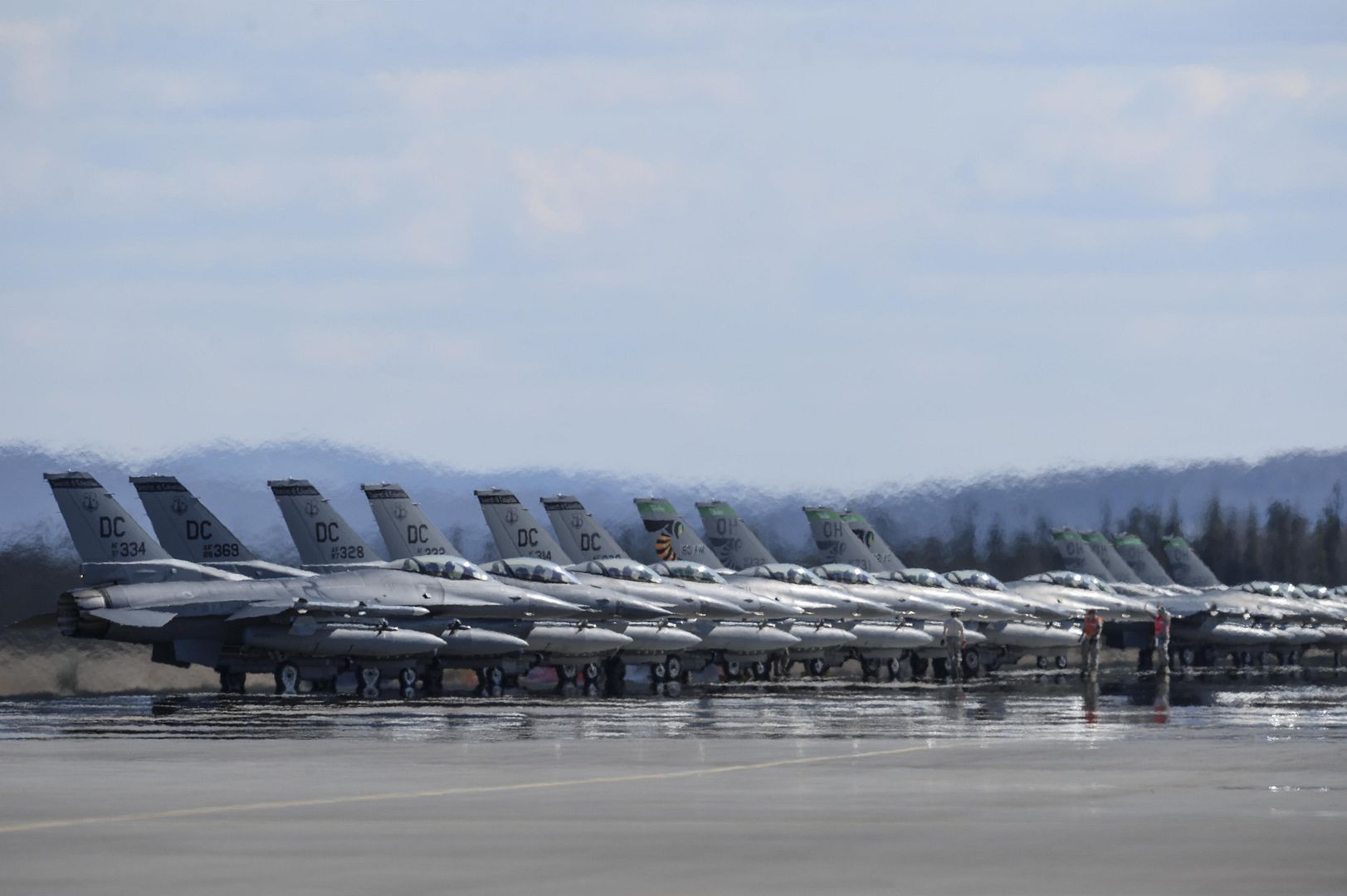
They should send this North of the border
Alberta needs it!
-
9 years agoSat May 07 2016, 06:18pm
 Main AdminThunderbirds pilots fly over Ft. Lauderdale during a practice show in preparation for the Fort Lauderdale Air Show, May 6, 2016. (U.S. Air Force photo/Tech. Sgt. Christopher Boitz)
Main AdminThunderbirds pilots fly over Ft. Lauderdale during a practice show in preparation for the Fort Lauderdale Air Show, May 6, 2016. (U.S. Air Force photo/Tech. Sgt. Christopher Boitz)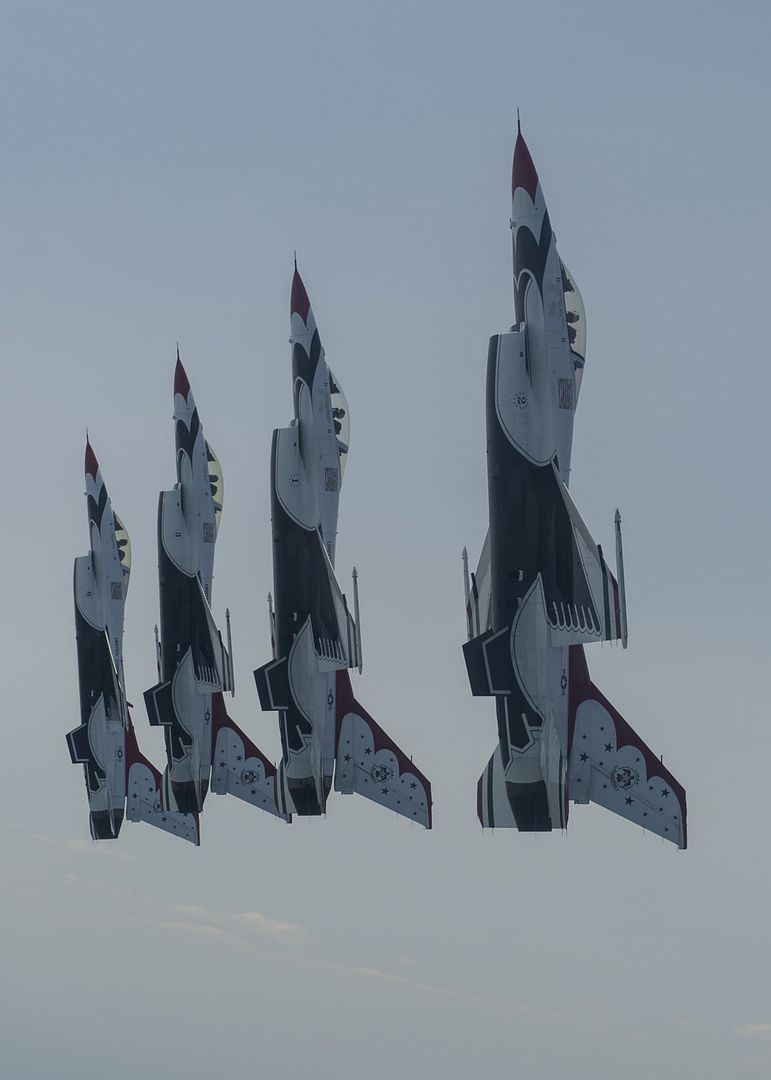
Thunderbirds pilots perform the Reflection Pass during a practice show in preparation for the Fort Lauderdale Air Show, Ft. Lauderdale, Fla., May 6, 2016. (U.S. Air Force photo/Tech. Sgt. Christopher Boitz)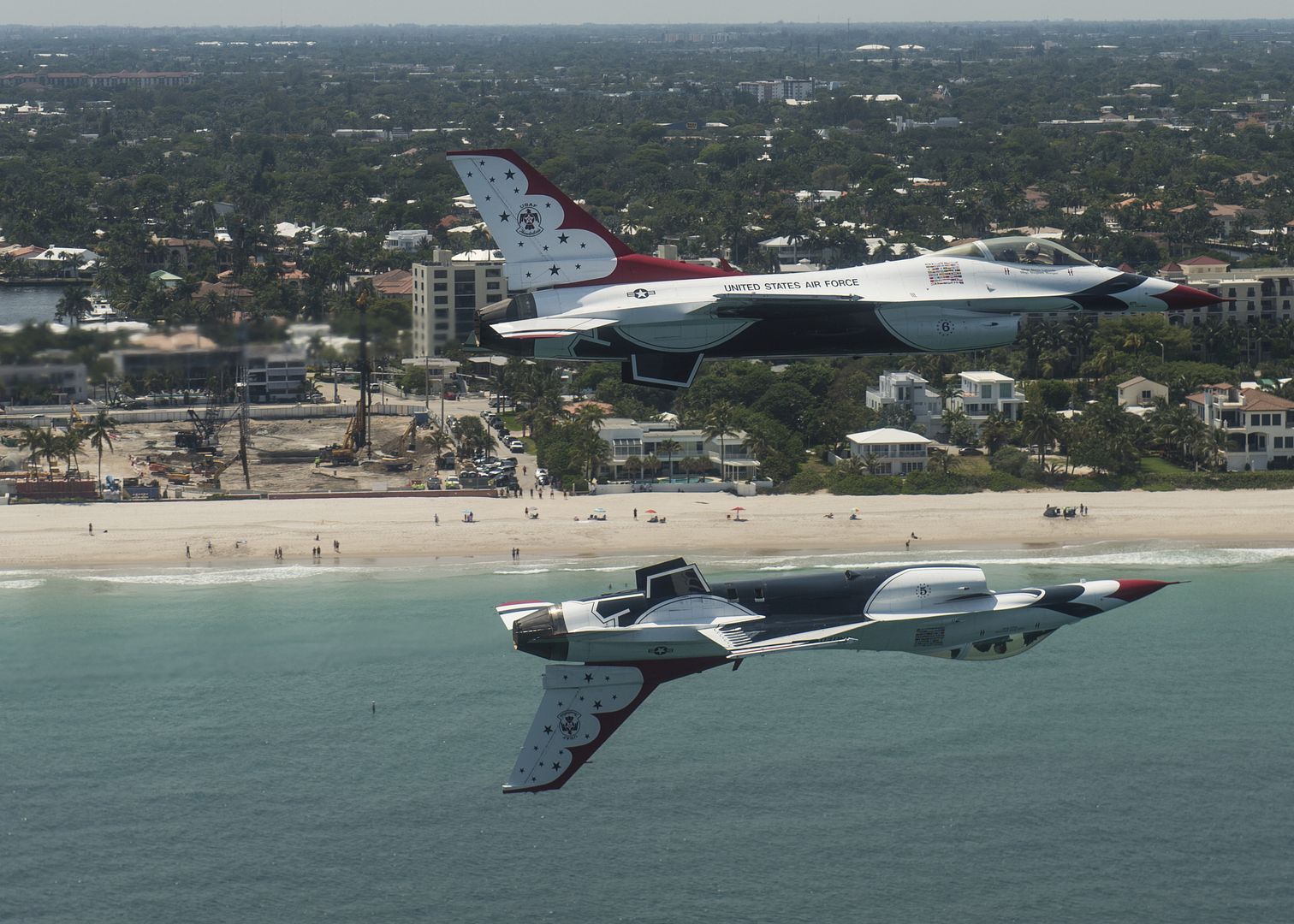
Thunderbirds pilots fly over Ft. Lauderdale during a practice show in preparation for the Fort Lauderdale Air Show, May 6, 2016. (U.S. Air Force photo/Tech. Sgt. Christopher Boitz)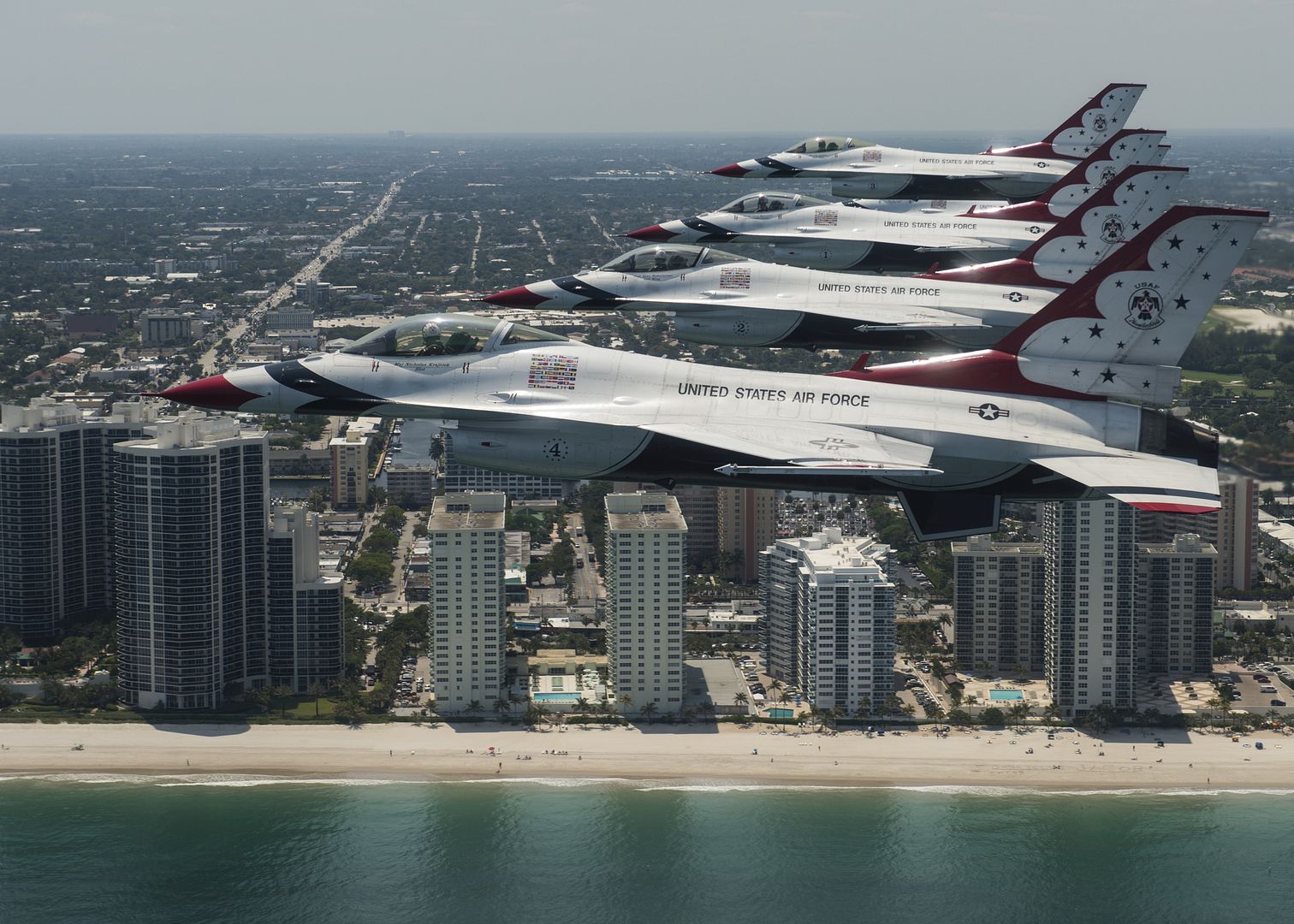
Thunderbirds pilots perform the Diamond Roll maneuver during a practice show in preparation for the Fort Lauderdale Air Show, Ft. Lauderdale, Fla., May 6, 2016. (U.S. Air Force photo/Tech. Sgt. Christopher Boitz)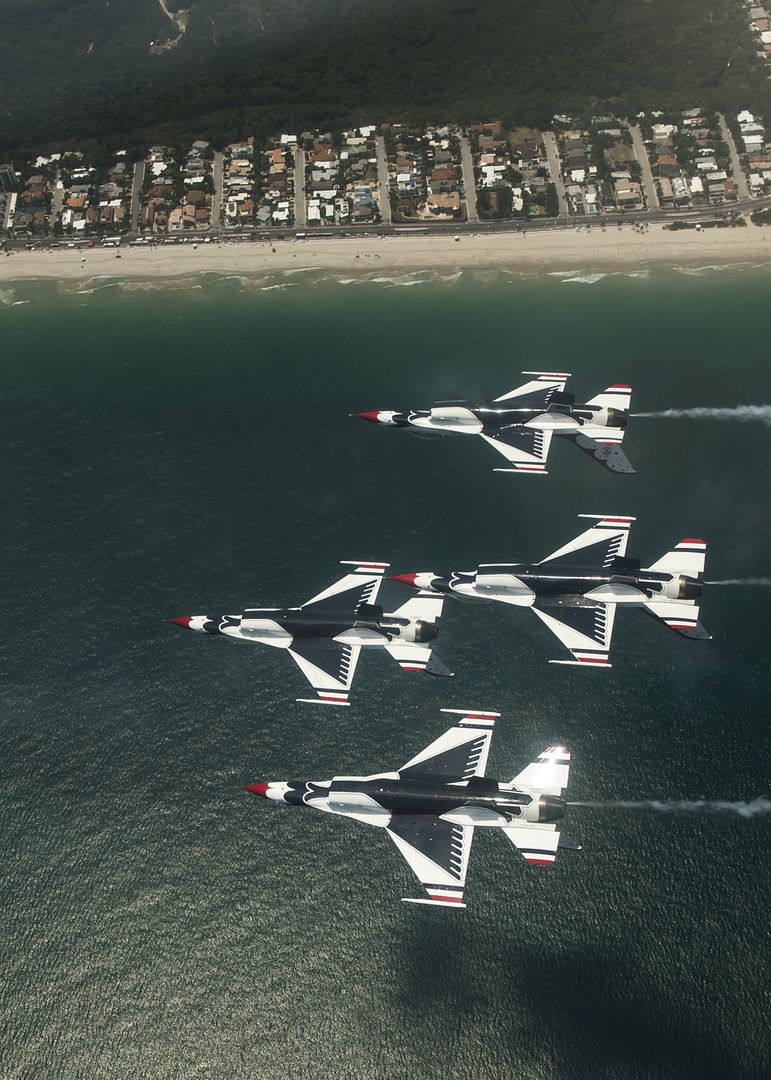
Thunderbirds pilots perform the Diamond Pass and Review maneuver during a practice show in preparation for the Fort Lauderdale Air Show, Ft. Lauderdale, Fla., May 6, 2016. (U.S. Air Force photo/Tech. Sgt. Christopher Boitz)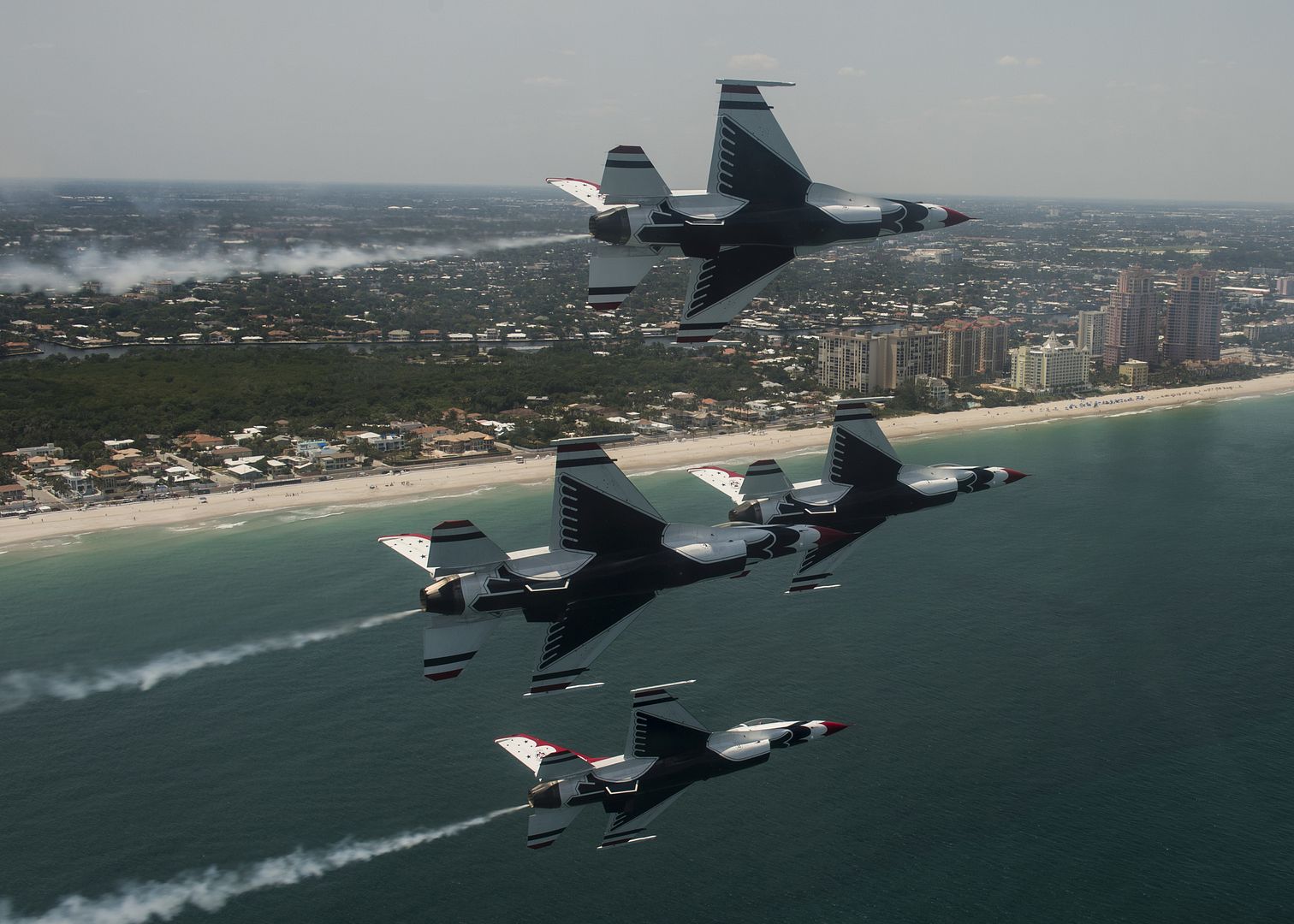
Thunderbirds pilots fly over Ft. Lauderdale during a practice show in preparation for the Fort Lauderdale Air Show, May 6, 2016. (U.S. Air Force photo/Tech. Sgt. Christopher Boitz)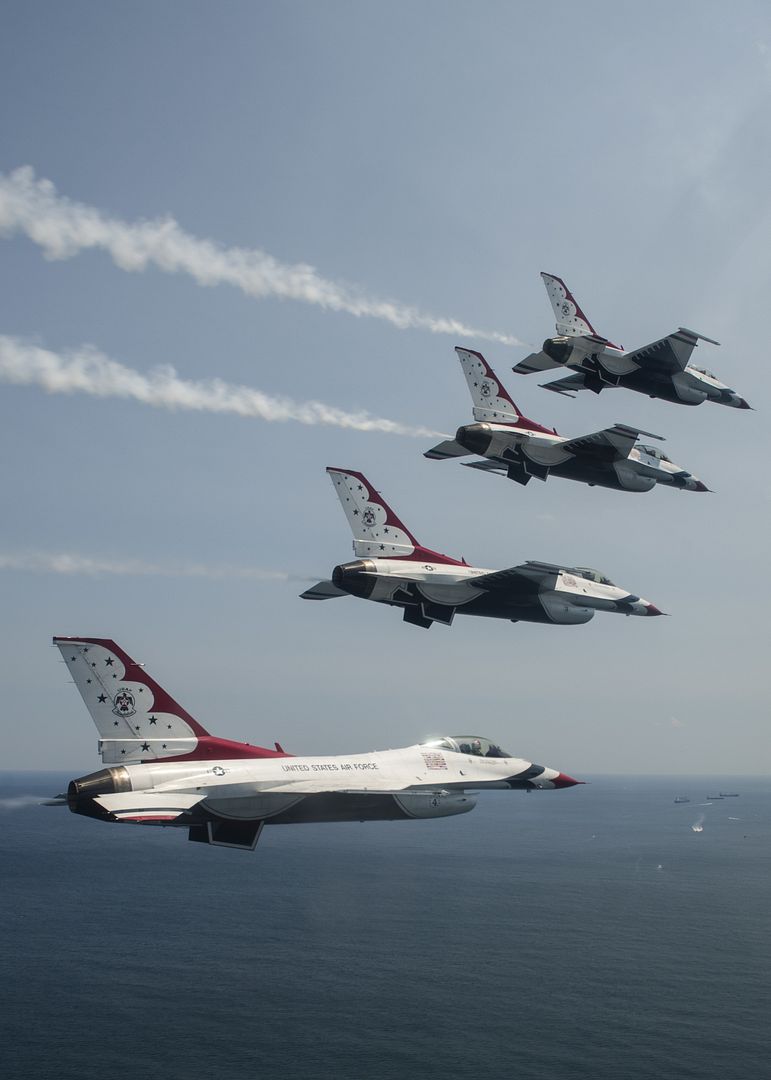
Canadian " snowbirds " put on a flawless display at the Fort Lauderdale show.
Photo's courtesy of RCAF.
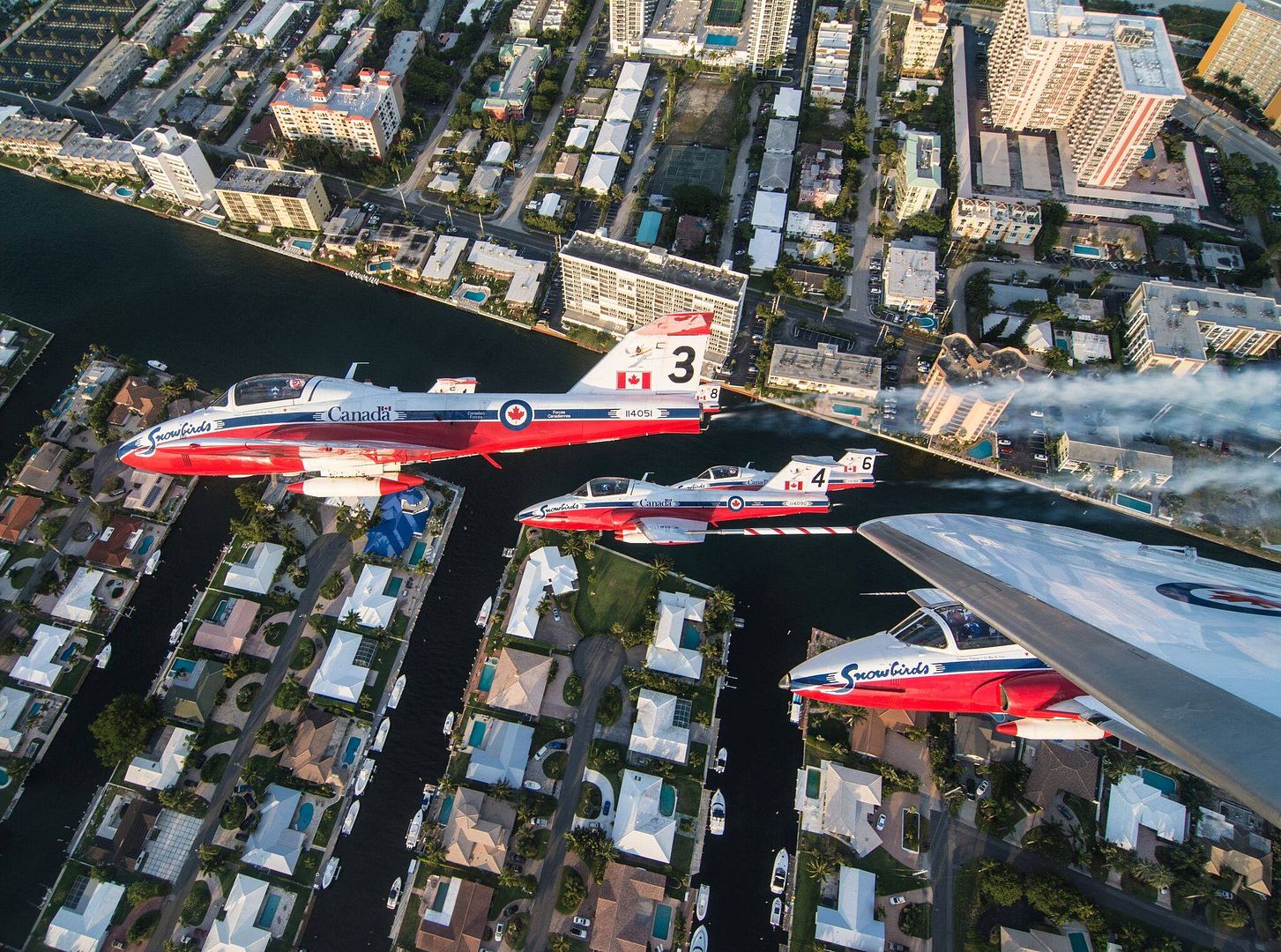
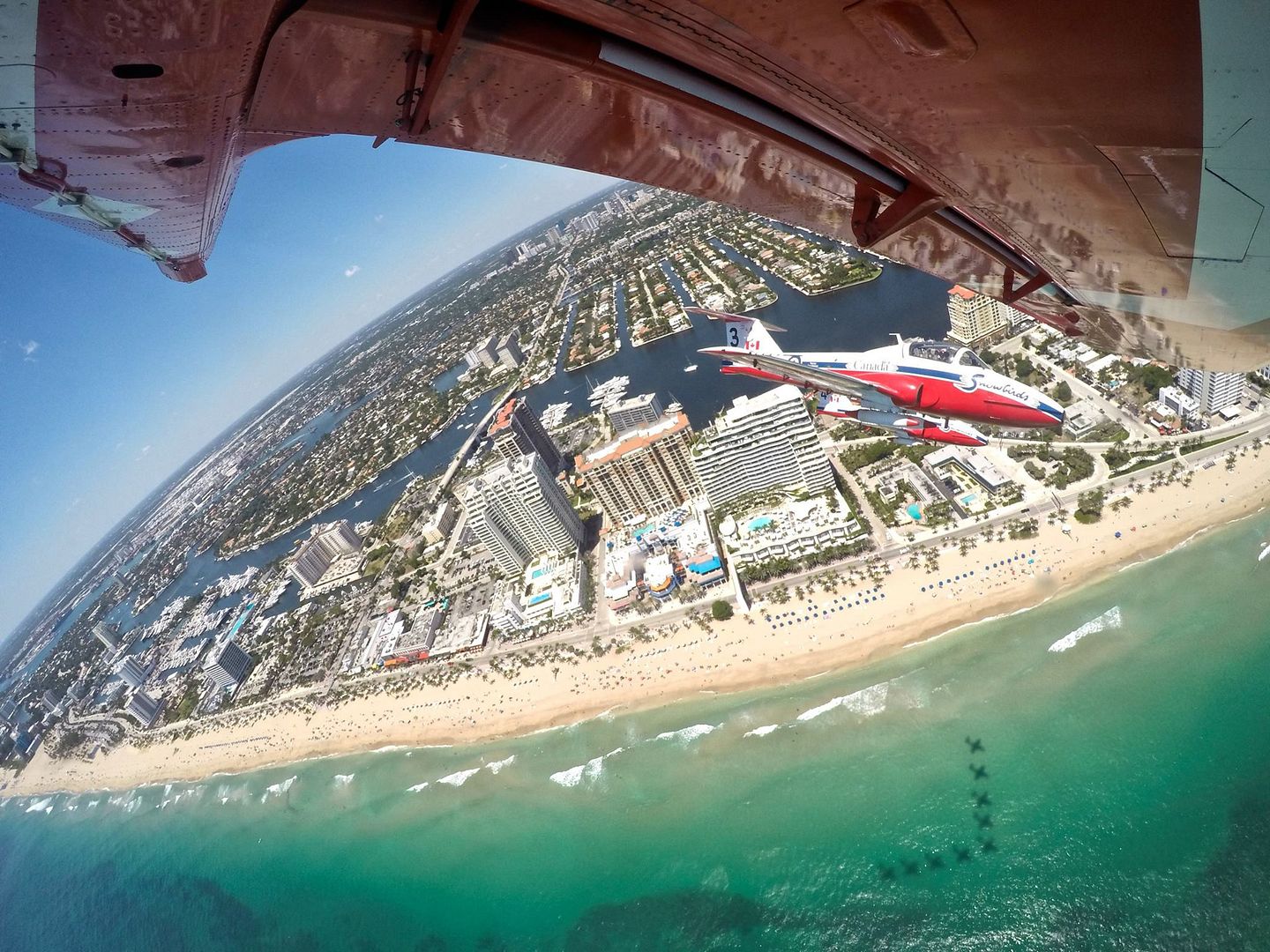
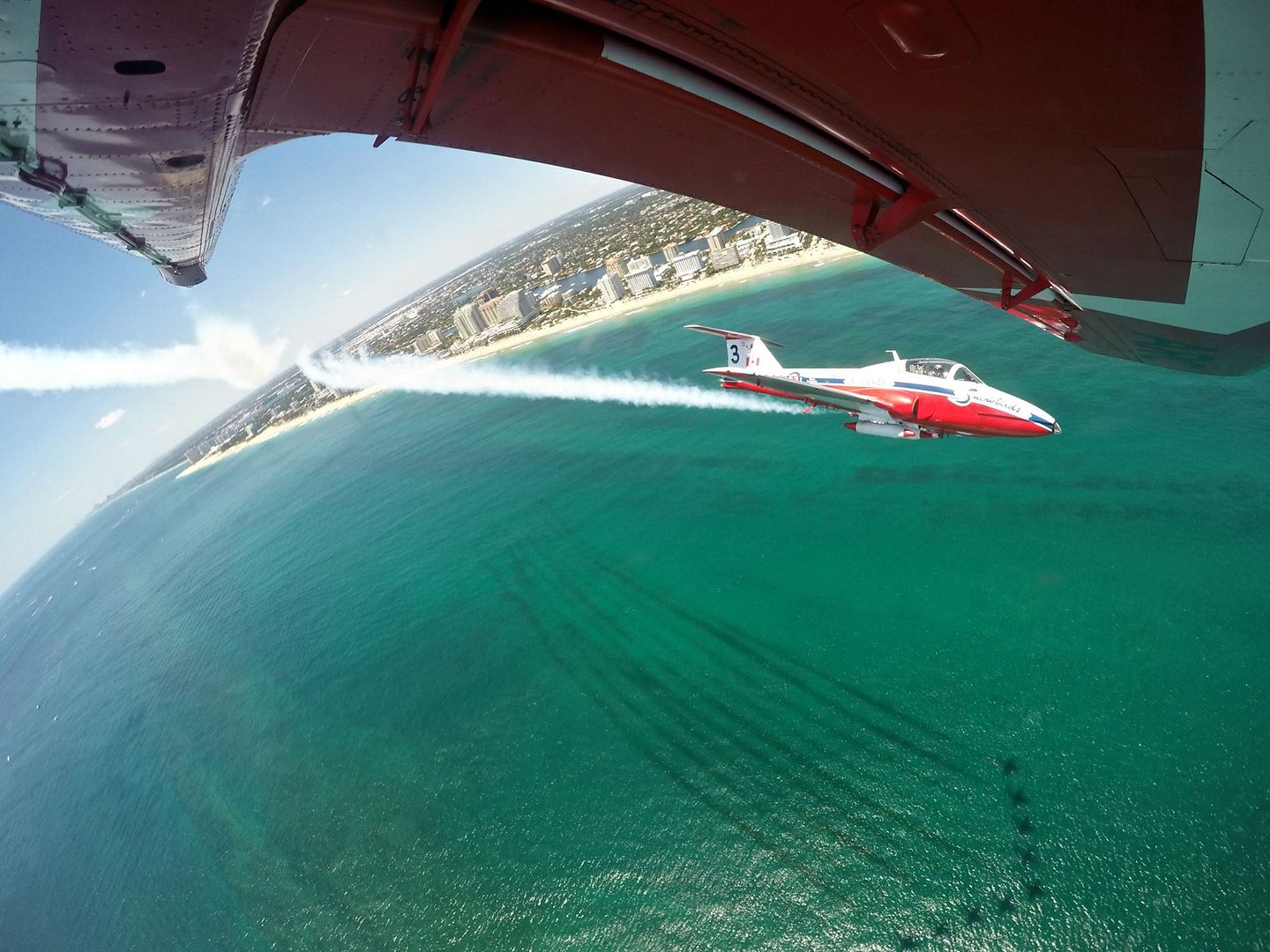
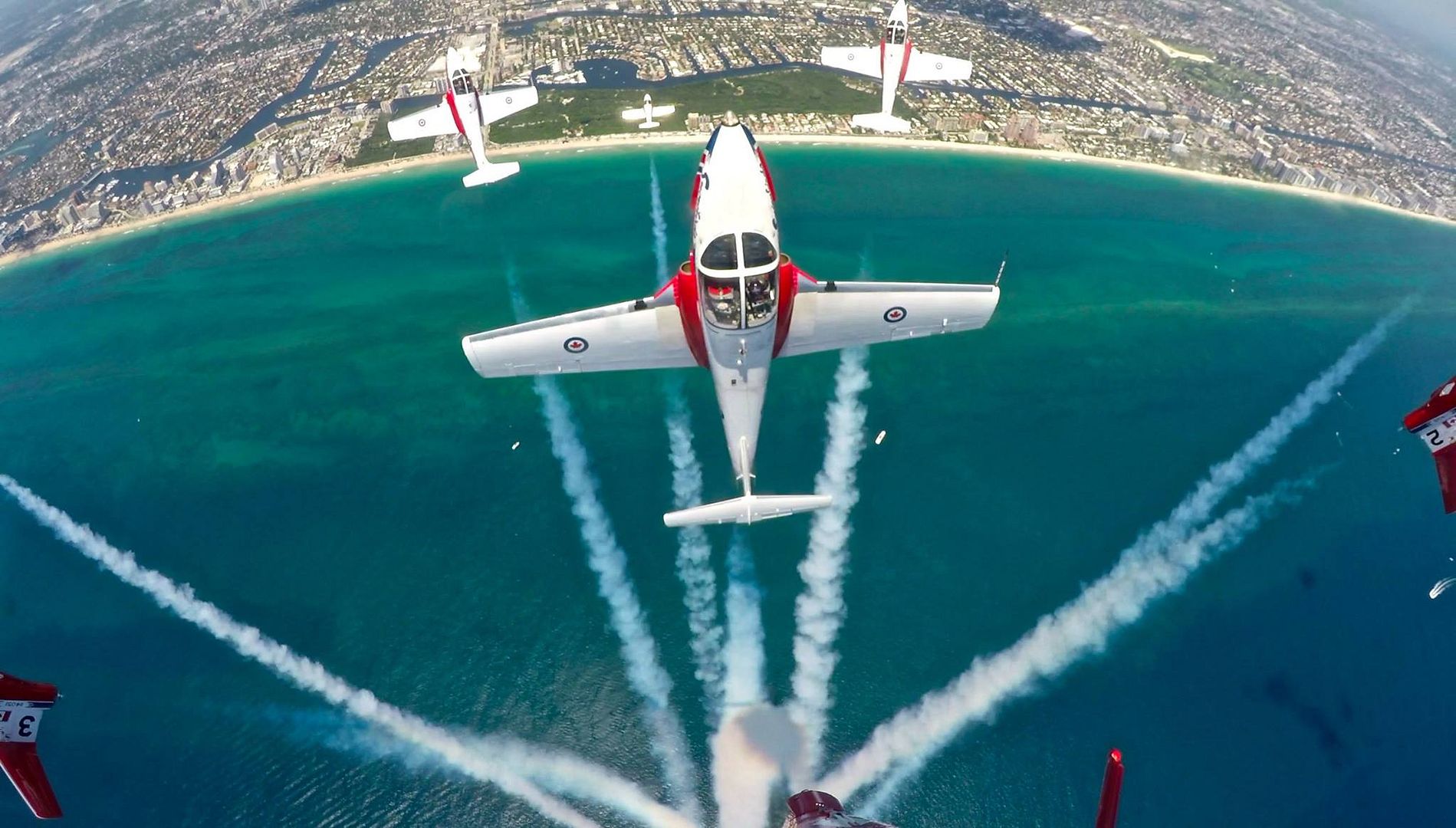
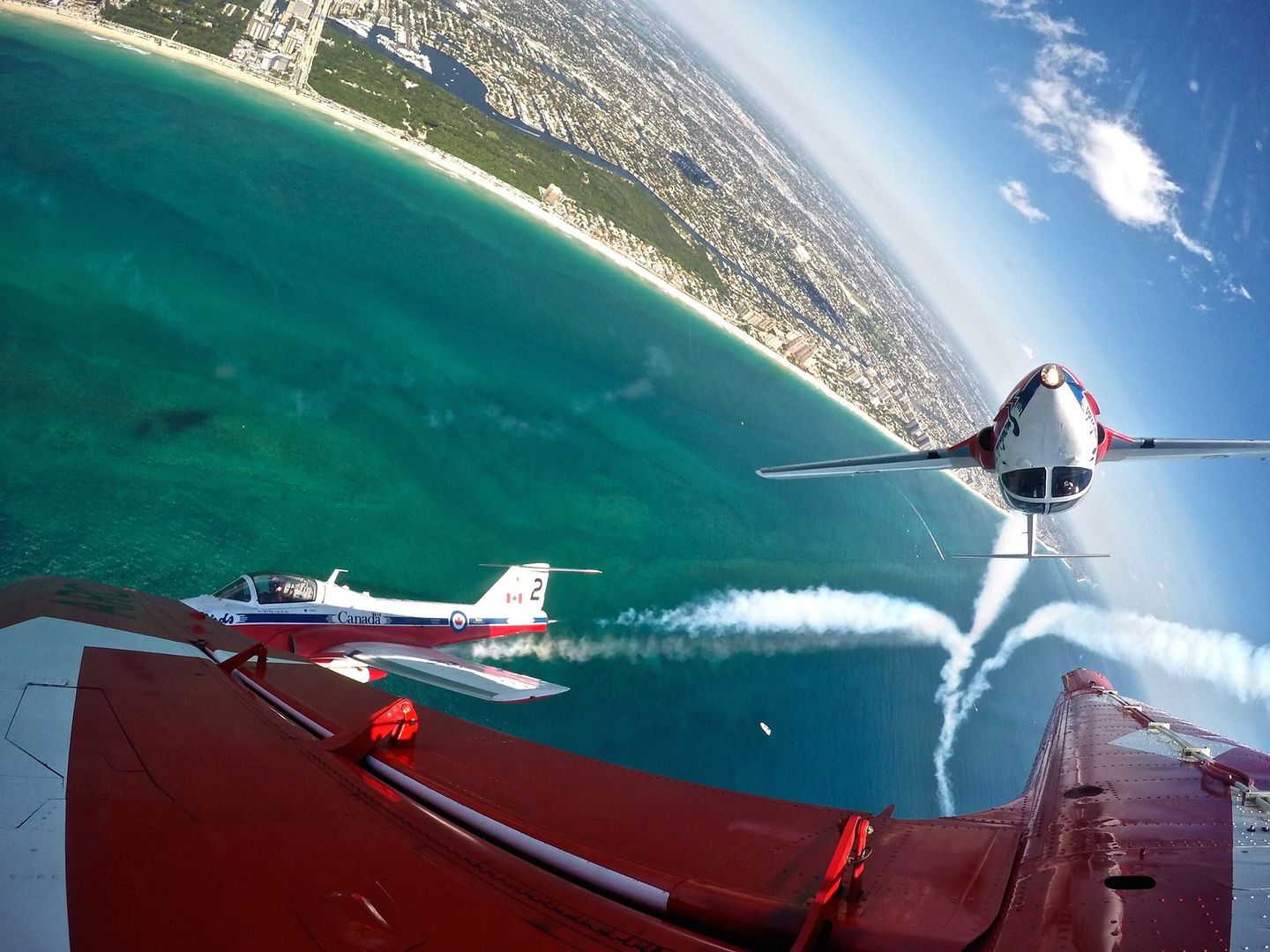
-
 Main AdminA U.S. Army UH-60 Black Hawk flies over Eglin Range, Fla., May 6, 2016, during Exercise Emerald Warrior 16. Emerald Warrior is a U.S. Special Operations Command sponsored mission rehearsal exercise during which joint special operations forces train to respond to real and emerging worldwide threats. (U.S. Air Force photo by Senior Airman Jasmonet Jackson)
Main AdminA U.S. Army UH-60 Black Hawk flies over Eglin Range, Fla., May 6, 2016, during Exercise Emerald Warrior 16. Emerald Warrior is a U.S. Special Operations Command sponsored mission rehearsal exercise during which joint special operations forces train to respond to real and emerging worldwide threats. (U.S. Air Force photo by Senior Airman Jasmonet Jackson)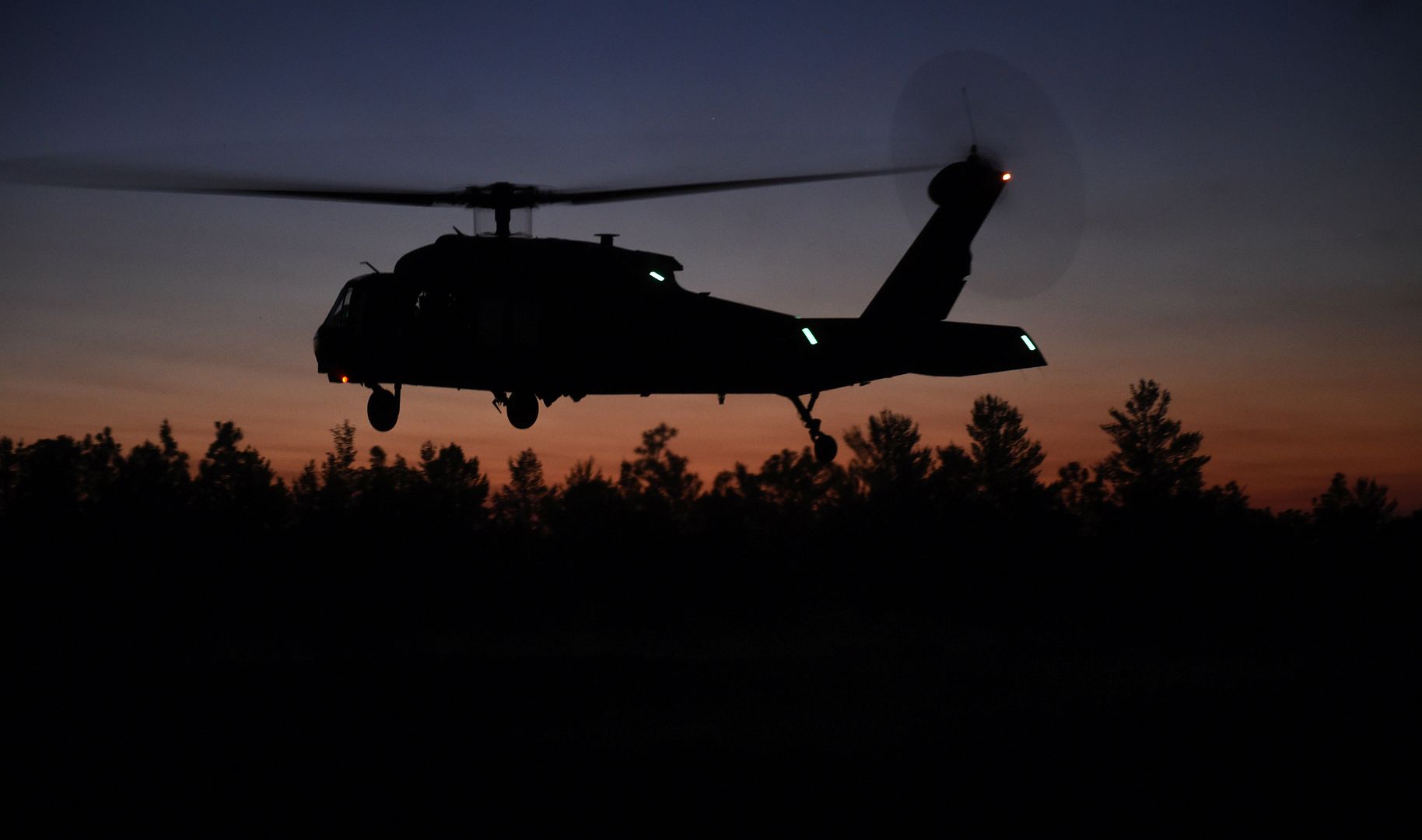
The Marine Corps? first two Kaman K-MAX Helicopters arrived at Marine Corps Air Station Yuma, Ariz., Saturday, May 7, 2016. The K-MAX will be added to MCAS Yuma's already vast collection of military air assets, and will utilize the station?s ranges to strengthen training, testing and operations across the Marine Corps.
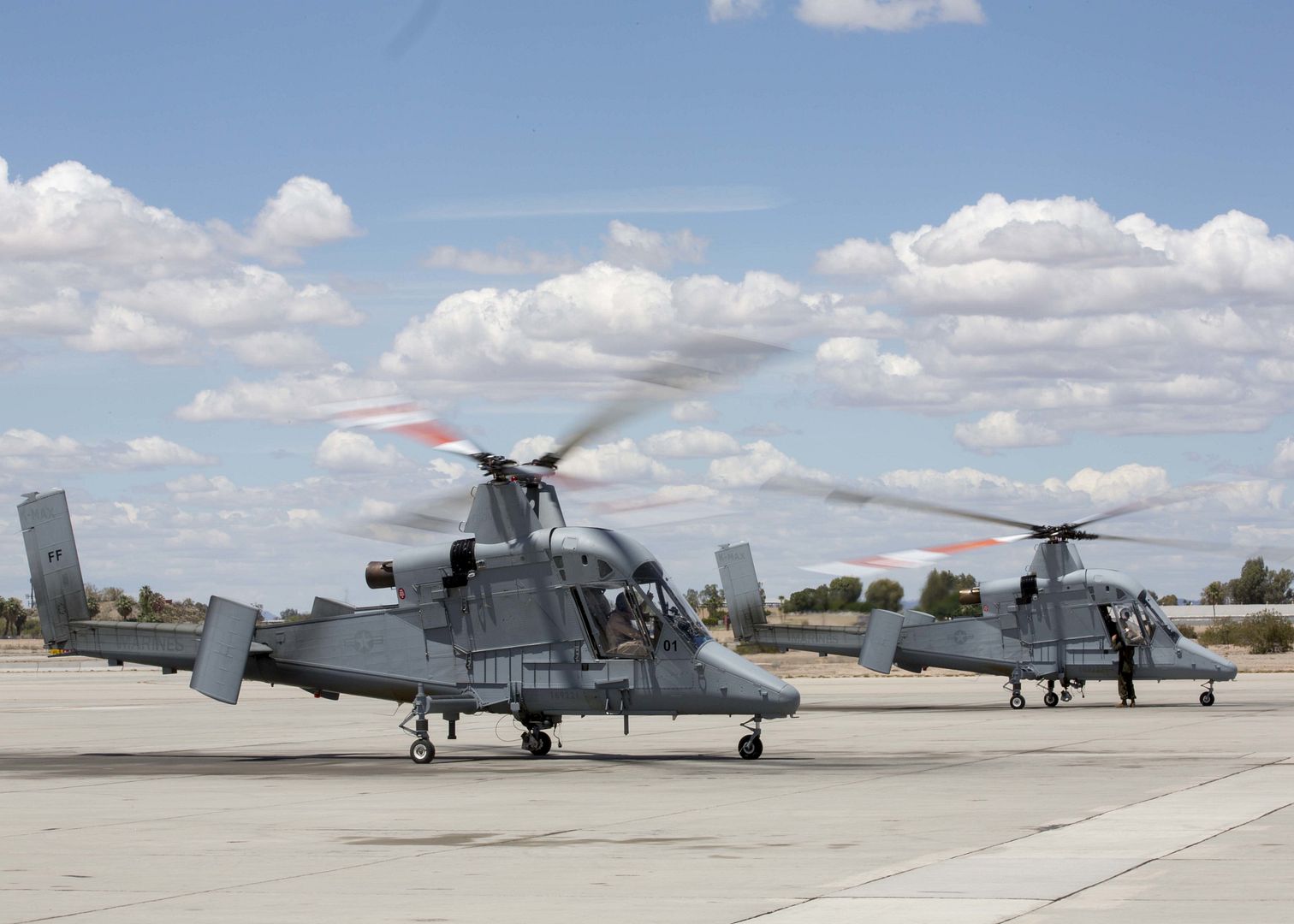
ATLANTIC OCEAN (May 7, 2016) A UH-1Y Venom helicopter lands on the flight deck of the amphibious assault Ship USS Wasp (LHD 1). Wasp is underway with the Wasp Amphibious Ready Group participating in composite training unit exercise. (U.S. Navy photo by Mass Communication Specialist 3rd Class Rawad Madanat/Released)
-
9 years agoMon May 09 2016, 08:05pm
 Main AdminTwo 95th Fighter Squadron F-22 Raptors taxi on the flightline after returning from a deployment to Europe May 8, 2016, at Tyndall AFB. While in Europe, the F-22s traveled to Royal Air Force Lakenheath, England; Mihail Kogalniceanu Air Base, Romania; and ?iauliai Air Base, Lithuania. (U.S. Air Force photo by Senior Airman Alex Fox Echols III/Released)
Main AdminTwo 95th Fighter Squadron F-22 Raptors taxi on the flightline after returning from a deployment to Europe May 8, 2016, at Tyndall AFB. While in Europe, the F-22s traveled to Royal Air Force Lakenheath, England; Mihail Kogalniceanu Air Base, Romania; and ?iauliai Air Base, Lithuania. (U.S. Air Force photo by Senior Airman Alex Fox Echols III/Released)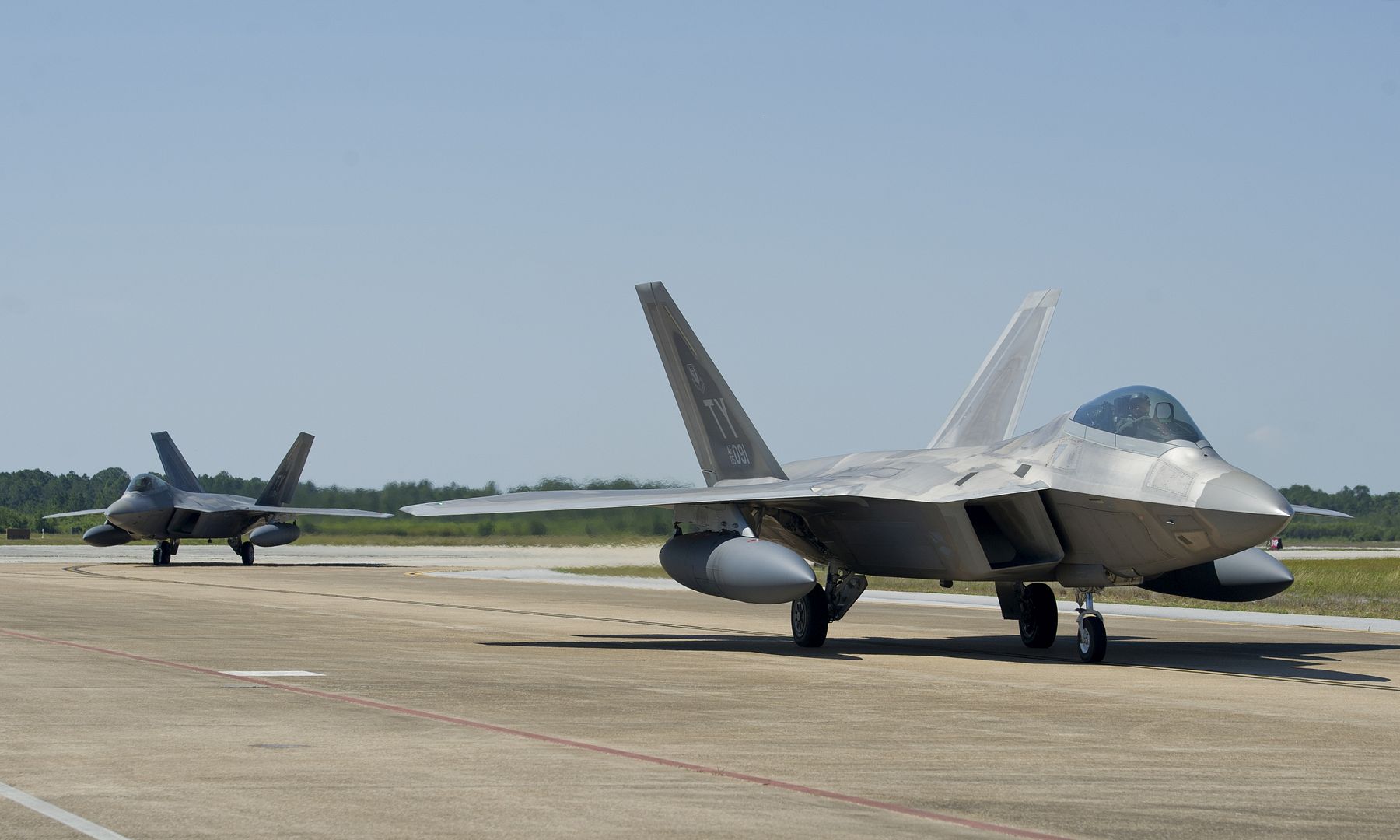
An F-22 Raptor pilot with the 95th Fighter Squadron, Tyndall Air Force Base, Fla., signals a crew chief May 8, 2016 on the Tyndall AFB flightline. The 95th FS deployed to RAF Lakenheath, England, to participate in exercises with NATO and partner allies. (U.S. Air Force photo by Senior Airman Dustin Mullen/Released)
An F-22 Raptor pilot with the 95th Fighter Squadron, Tyndall Air Force Base, Fla., waves as he taxis by May 8, 2016 on the Tyndall AFB flightline. The 95th FS spent just under a month in Europe during a deployment called Rapid Raptor. (U.S. Air Force photo by Senior Airman Dustin Mullen/Released)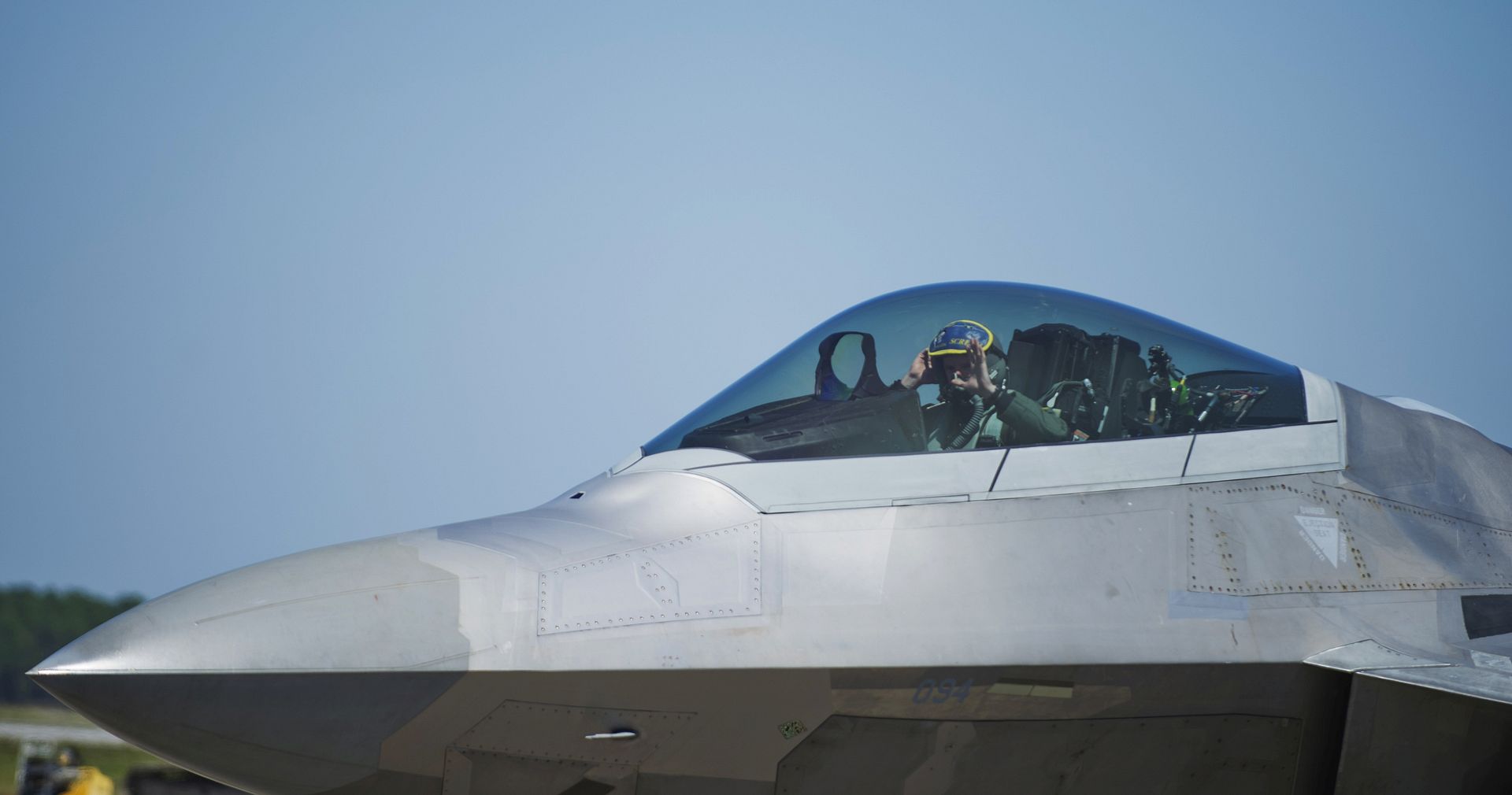
ATLANTIC OCEAN (May 8, 2016) An MV-22 Osprey takes off from the flight deck of the amphibious assault ship USS Wasp (LHD 1). Wasp is underway with the Wasp Amphibious Ready Group participating in composite training unit exercise. (U.S. Navy photo by Mass Communication Specialist 2nd Class Nathan Wilkes/Released)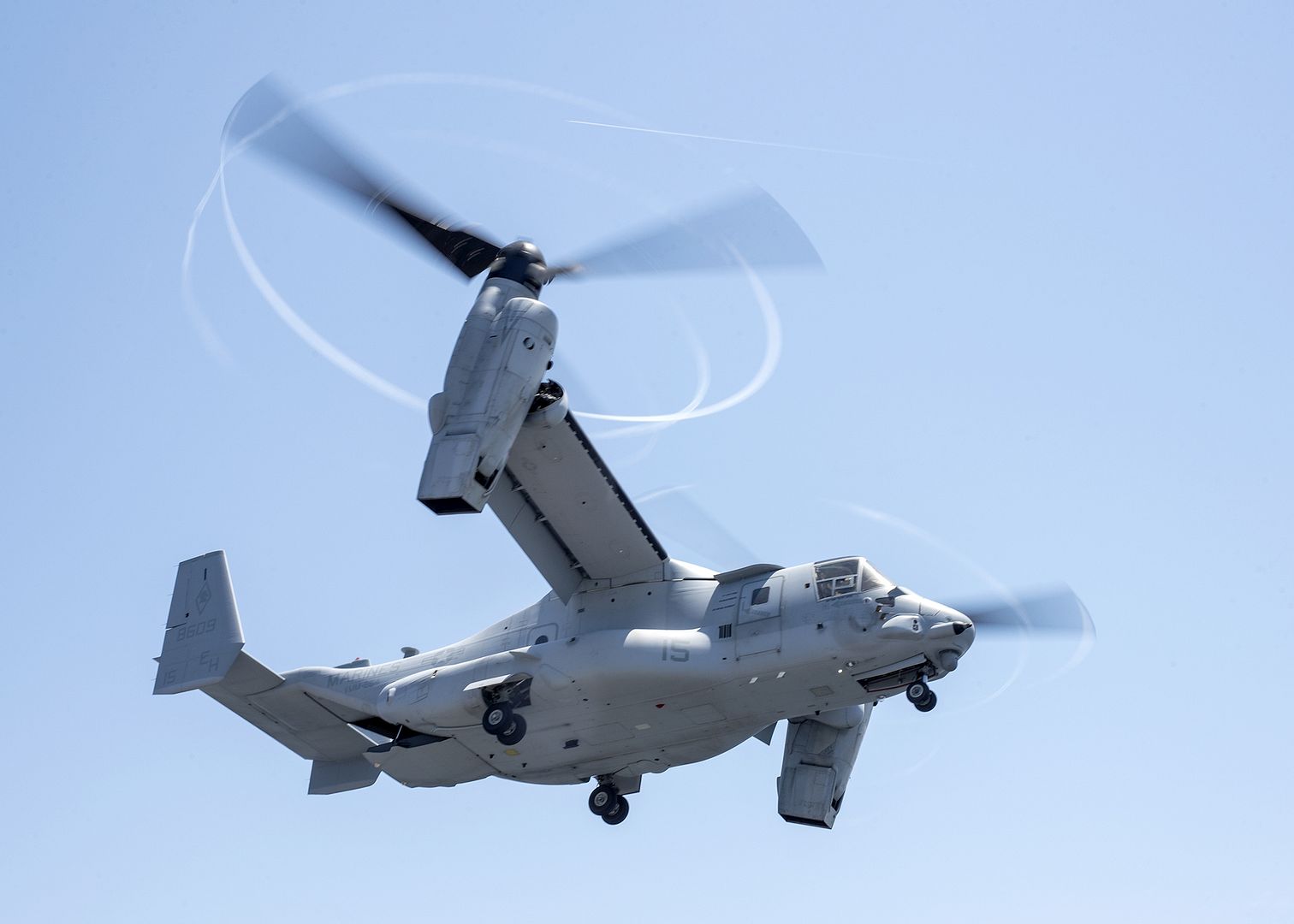
U.S. Navy F-18's perform a four-ship flyover at the Opening Ceremony of Invictus Games 2016 in Orlando, Fla. May 8, 2016. The Invictus Games are composed of 14 nations with over 500 military competitors competing in 10 sporting events May 8-12, 2016. (U.S. Air Force photo by Staff Sgt. Carlin Leslie/Released)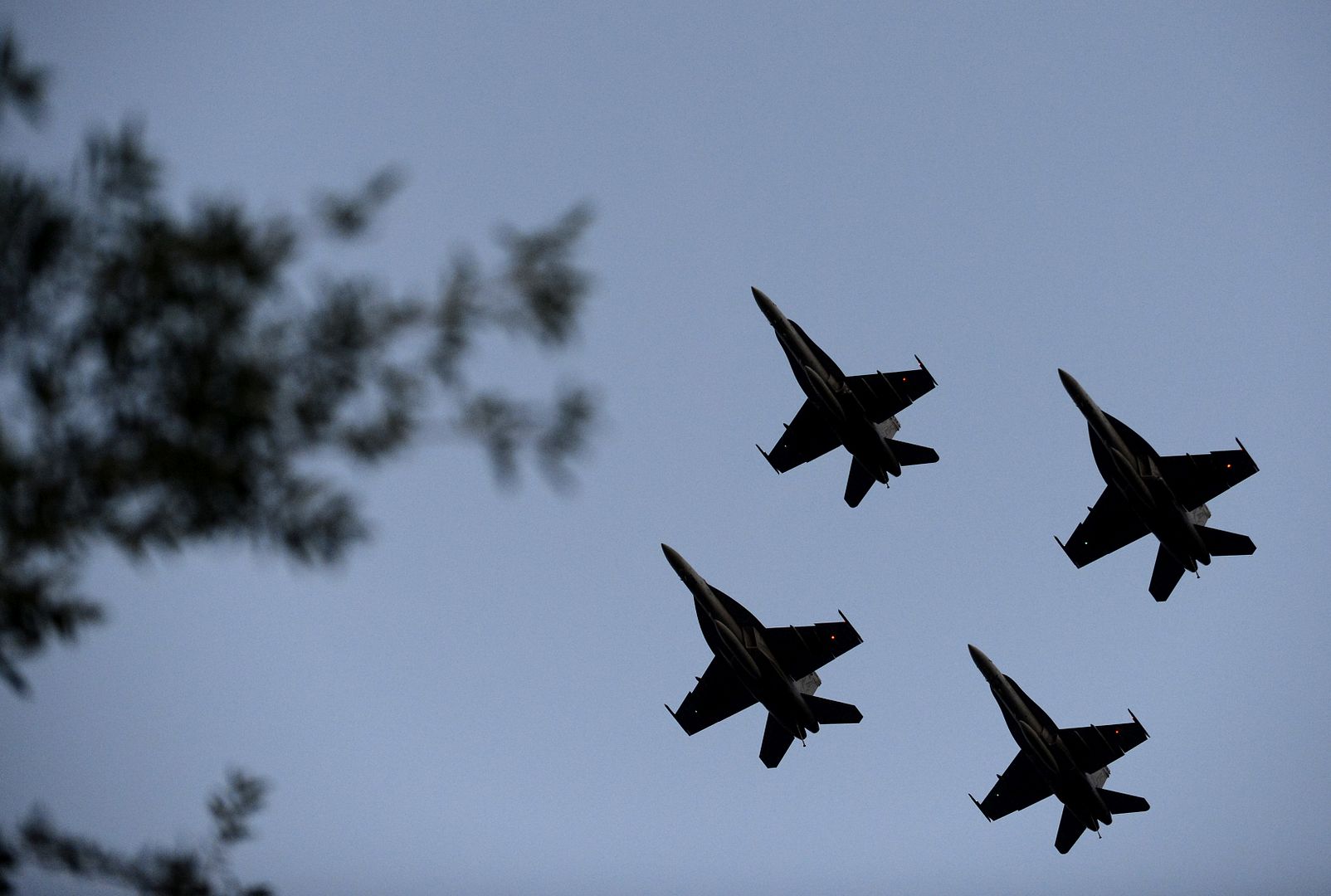
HILL AIR FORCE BASE, Utah (AFNS) -- F-35 Lightning II pilots from Hill Air Force Base began flying routine four-ship combat training missions at the Utah Test and Training Range in the west desert May 2.
Active-duty and Reserve pilots from the 388th and 419th Fighter Wings used the jet?s intricate computer network to evade a series of simulated threats. They worked together to detect and jam enemy radar and identify and destroy targets from roughly 40,000 feet, just as they would in combat.
?A four-ship configuration is the standard for combat, so this training is crucial,? said Lt. Col. George Watkins, the 34th Fighter Squadron commander. ?We?ll train to fly into contested environments where highly advanced enemy surface-to-air threats exist.?
The F-35 was created to do just that. It?s impossible to penetrate this type of enemy territory with non-stealth aircraft such as the F-16 Fighting Falcon, A-10 Thunderbolt II and F-15 Eagle, Watkins said.
In addition to being stealthy, the F-35 is designed to gather, fuse and distribute more information than any fighter jet in history.
?The F-35 gives us the ability to access enemy airspace like never before,? said Lt. Col. Curtis Pitts, the commander of Detachment 1, 419th Operations Group. ?The F-35 is a giant leap in technology and offers a significant air superiority advantage in high-threat areas.?
The 34th FS flew their first four-ship flights during two days of surge operations in March to test the ability of F-35 maintenance troops to get aircraft off the ramp and into the skies quickly. They generated 16 sorties with zero maintenance discrepancies, according to Capt. Richard Palz, the 34th Aircraft Maintenance Unit officer in charge.
?We?ve vetted and tested our ability to generate four-ships and doing so regularly will become routine, which is a significant step on the road to initial operational capability,? Palz said.
The Air Force?s first operational F-35 arrived at Hill AFB in September 2015. Hill?s fighter wings are currently working to reach IOC, at which time the F-35 will be ready for combat.
The base will be home to three operational F-35 fighter squadrons with a total of 78 aircraft by the end of 2019. The 388th and 419th FWs fly and maintain the Air Force?s newest fighter aircraft in a total force partnership, which capitalizes on the strength of both components.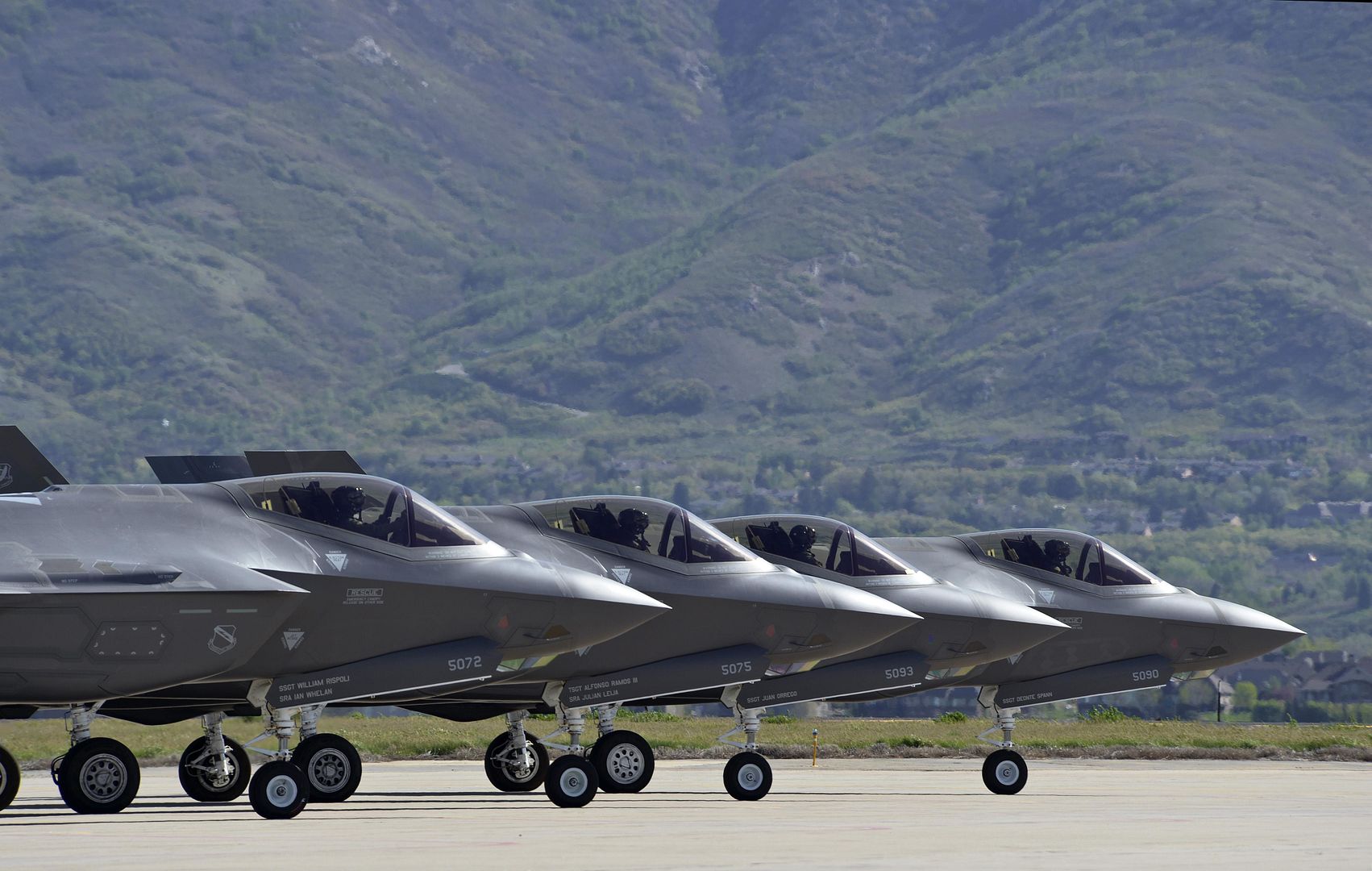
Post a reply
- Go to Next topic
- Go to Welcome
- Go to Introduce Yourself
- Go to General Discussion
- Go to Screenshots, Images and Videos
- Go to Off topic
- Go to Works in Progress
- Go to Skinning Tips / Tutorials
- Go to Skin Requests
- Go to IJAAF Library
- Go to Luftwaffe Library
- Go to RAF Library
- Go to USAAF / USN Library
- Go to Misc Library
- Go to The Ops Room
- Go to Made in Germany
- Go to Campaigns and Missions
- Go to Works in Progress
- Go to Juri's Air-Raid Shelter
- Go to Campaigns and Missions
- Go to Works in Progress
- Go to Skinpacks
- Go to External Projects Discussion
- Go to Books & Resources
